
TRADE FINANCE TALKS OCT 2022 FEATURED VISA–B2B CROSS-BORDER PAYMENTS: IMPROVING EFFICIENCY, SPEED, AND TRANSPARENCY TIME’S TICKING FOR TECH
THANKS TO
ALAN KOENIGSBERG

RISHIKESH TINAIKAR
JIM REGAN
ENNO-BURGHARD WEITZEL
SCOTT WELLCOME
PRADEEP NAIR

MICHELLE KNOWLES
GEORGE WILSON
GAYANE MIRZOYAN
CHYNARA ALYBAEVA
ANDY ROMANOV
VLADISLAV BEREZHNY TULKIN YUSUPOV
DALTON LEE
PAUL WOLLNY
GORDON CESSFORD
RICHARD RAWLINSON
MARTIN GRUNEWALD
ANASTASIA MCALPINE JOSH KROEKER MARK BORTON
TFG EDITORIAL TEAM
DEEPESH
ANASTASIJA KOVACEVIC CARTER HOFFMAN
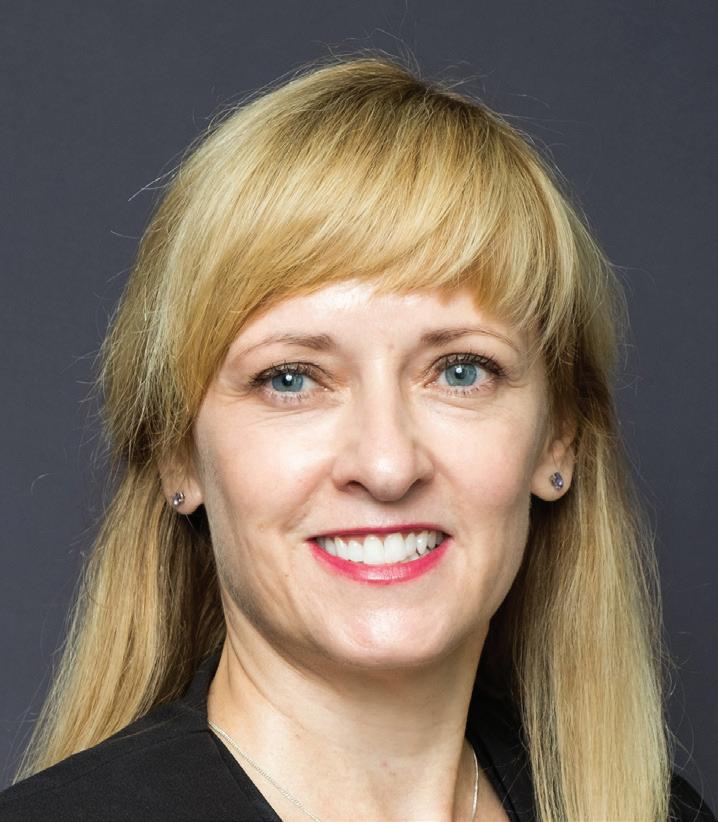
PHOTOGRAPHS AND ILLUSTRATIONS
FREEPIK COMPANY
© Trade Finance Talks is owned and produced by TFG Publishing Ltd (t/a Trade Finance Global). Copyright © 2022. All Rights Reserved. No part of this publication may be reproduced in whole or part without permission from the publisher. The views expressed in Trade Finance Talks are those of the respective contributors and are not necessarily shared by Trade Finance Global.
Although Trade Finance Talks has made every effort to ensure the ac curacy of this publication, neither it nor any contributor can accept any legal responsibility whatsoever for the consequences that may arise from any opinions or advice given. This publication is not a substitute for any professional advice.
2 TRADE FINANCE TALKS
10
ALAN KOENIGSBERG
SVP
and Global Head of Treasury and Working Capital Solutions Visa
13
RISHIKESH TINAIKAR
Global
Head of Corporates and Trade Go To Market SWIFT
27
MICHELLE KNOWLES
Pan African Head of Trade Finance Product Absa Corporate Investment Banking
PATEL
S.L. ADDRESS 2ND FLOOR 201 HAVERSTOCK HILL BELSIZE PARK LONDON NW3 4QG TELEPHONE +44 (0) 20 3865 3705
1 FOREWORD
1.1 Time’s ticking for tech
2 FEATURED
2.1 B2B cross-border payments: improving efficiency, speed, and transparency
2.2 SWIFT thinking: how the global payments system can help digitalise trade finance
2.3 Digitisation in transforming the trade landscape
2.4 Driving sustainability in global trade with digital collaboration
2.5 Can Europe be the first carbon-neutral continent?
2.6 Data standards: a key to a truly sustainable trade
2.7 African trade finance enters an exciting new phase
3 EMERGING MARKETS
3.1 African access to trade: SMEs, FX, and sustainability
3.2 International trade, sustainability, digitisation in Armenia
3.3 Banking in the Kyrgyz Republic, Optima Bank OSJC
3.4 Trade finance in Ukraine: a rallying call for industry members
3.5 Uzbekistan’s largest oil and gas company on digitisation, ESG, geopolitics
3.6 Emerging markets roundtable: understanding and addressing trade finance challenges for SMEs
3.7 Correspondent banking in the Caribbean: the impact of ‘derisking’ on the real economy
4 TRADE CREDIT INSURANCE
4.1 The changing risk landscape of trade credit insurance
4.2 GreenStars’ Paul Wollny on the world of credit insurance
4.3 Atradius on political risk, emerging markets, digitalisation
4.4 Resilience, technology, and risk appetite: credit insurance experts weigh in on current trend
5 FINTECH
5.1 A different type of KYC: lessons from the sub-saharan Africa mobile phone market
5.2 Procure to pay in a global economy: how businesses can acknowledge FX in their processes
5.3 How connected payments impact Africa
5.4 Interview: Why ‘ecosystem play’ is important for digital trade
5.5 Driving a digital agenda for trade: how the ICC is setting the standard
3 CONTENTS
4
5
8
10
13
16
18
22
25
27
30
32
34
37
41
44
47
51
54
56
58
61
64
66
68
71
75
78
82 8 TFG PARTNER CONFERENCES AND EVENTS 86 9 PODCAST 90 10 ABOUT TRADE FINANCE GLOBAL 92 CONTENTS

FOREWORD

1
DEEPESH PATEL Editorial Director Trade Finance Global

Time’s ticking for tech 1.1
ANASTASIJA KOVACEVIC Junior Editor Trade Finance Global

Greek philosopher Heraclitus’ words, written more than 1000 years ago, ring truer today than ever before.
Change can come at any point and can be catalysed by any manner of things. Trade has proven no exception to the rule. US inflation is at a 40-year high, sovereign debt is soaring all around the world, and there’s no end in sight with the devastation between Russia and Ukraine.
At the World Trade Organisation’s (WTO) Public Forum this month, we heard Director general Dr Ngozi Okonjo-Iweala admit that the world is heading towards a global recession due to a “collision of poly-crises around security, climate, energy, [and] food prices”.
“The world cannot afford to do business as usual,” Okonjo-Iweala said.
Yet, the counter-cyclical nature of trade against sluggish economic growth is creating an urgency toward affordable, inclusive, and resilient trade.
Digitisation has once again come first place in the trending trade top of the pops, with murmurings of electronic bills of lading (eBLs), non-fungible tokens (NFTs) and legal reform also joining the party.
It’s all quite overwhelming.
Taking a step back though, there have been pockets of success
at impressive speeds around many innovations seizing the market, scale is now key. To name a few detailed in this issue; Visa B2B connect, SGTraDEX (with Veridapt), SWIFT’s messaging standards, and African payments developments have all catapulted trade, treasury, and payments.
This issue of Trade Finance Talks aims to deconstruct the tenets facilitating change in the landscape.
Emerging markets face the most challenges
As the youngest continent in the world, with immeasurable levels of untapped wealth, industry leaders’ heads have been turned toward one region in particular: Africa.
Traditionally the African subcontinent has faced many obstacles to accessing trade finance and US dollar liquidity.
This issue has been intensified by inflation hikes and supply chain strains. And African smalland medium-sized enterprises (SMEs)––who provide a bulk of employment––are the ones feeling the brunt of this.
The $120 billion trade finance gap remains a big problem in the African eco-system. This figure is set to rise on account of geopolitical, social, and economic turmoil since.
6 TRADE FINANCE TALKS tradefinanceglobal.com
“There is nothing permanent except change.”
Though the facts present themselves in bleak hues, the fact remains that the large and majority-untapped African market has much to offer.
Elsewhere, there has been a growing trade finance problem in emerging markets.
The current risk landscape has led to dwindling correspondent and respondent banking relationships, whose effects have been farreaching.
Rather unsurprisingly, this has disproportionately affected smaller economies, with credit departments becoming more apprehensive about allocating limited capital to ‘risky’ investments.
TFG spoke to the Caribbean Association of Banks (CAB) about seeking correspondent banking relationships as far as Pakistan. As TFG heard at EBRD’s Trade Facilitation Programme in Istanbul last month, the same issues are being faced across central Eastern and European nations.
The effects of ‘derisking’ are extremely damaging to local communities, who rely on dollar or euro imports. Elements such as inflation and the inability to clear payments in local currencies have brought additional challenges.
Access to healthcare, travel, and education are all placed in the firing line once large banks start to retract support.
Every cloud
Risk is at an all time high, which permeates around all areas of trade and export finance.
This has mostly manifested as a retreat up the credit curve, with BBB+ businesses and below feeling the blow the most.
Does the umbrella open when it rains? TFG invited leaders from the CPRI industry to discuss risk appetite, changes within the credit insurance market and innovations during these challenging times.
New regulatory constraints such as Basel III reform and European Commission amendments to the Capital Requirement Regulations (CRR) have only heightened the issue, hindering banks to lend more to SMEs.
Perhaps innovations in securitisations, or tokenising pools of trade finance assets to open the industry up to new institutional investment could be key.
Of course, we must not forget the power of tech in this matter.
Sure enough, increased operability and efficiency, thanks to artificial intelligence (AI) and new data solutions, have significantly aided in client relations––but these are not the only means in which digitisation has bolstered the trade industry.
Tick, tick, tech Technology. A double-edged sword whose powers for good and nefarious are often times equally balanced.
Anti-money laundering (AML) and know your customer (KYC) may not be the first thing that comes to mind when technology is mentioned, but it is an issue frequently cited in the field.
Digitisation of documents also comes with pitfalls. Duplicate financing fraud is another subgenre aggravating the trade finance industry and the trade finance gap in its wake.
It is difficult not to focus solely on the negative aspect of technology, especially when the repercussions of certain elements have far-reaching ramifications.
However, the realm of tradetech has brought about deep-running and tangible positive effects, most keenly felt––in rather a full-circle affair––in the emerging markets sector.
Accessibility to platforms facilitating cross-border payments has alleviated problems long faced by developing economies. And in many ways, new digital initiatives have levelled the proverbial playing field.
Indeed, technology has allowed a myriad of positive changes to take place, not least helping lessen sustainability consequences generated by a paper-based industry.
It is safe to say that issues surrounding digitisation are not so black and white; whether the advancement of tech is a ticking time bomb, or trade’s saving grace, remains to be seen.
Time’s ticking for tech.
Once again, we thank all of our sponsors, associations and partners for their support to Trade Finance Global.
7 tradefinanceglobal.com
FOREWORD

FEATURED

2
2.1
B2B cross-border payments: improving efficiency, speed, and transparency
Cross-border payments innovation as a priority for everyone
When it comes to innovations in business-to-business (B2B) payments, the marketplace is, and not for the first time, taking its cue from consumers.
The advancement of consumer payments has largely been driven by demand for a better customer experience.
Additionally, the acceleration of cross-border commerce makes cross-border B2B payments even more of a focus. Banks are responding to businesses that are keenly interested in leveraging emerging technologies to improve transparency, expand optionality, and lower costs associated with cross-border payments.

Considering the difficult environment banks and businesses are experiencing globally, transparent, simple, efficient, and tailored payment solutions are now more important than ever.
Development on an international scale
As global business expands, so too does the volume of crossborder payments.
There are currently $120 trillion in global B2B payments processed annually, with at least $10 trillion supporting cross-border trade.
In the face of this growth, banks are left to deal with these highly complex transactions dependent on correspondent banking relationships, offering limited visibility into the status of payments, costs, and certainty.
The traditional payments process leaves receiving banks with little predictability of when payments will arrive, or the amount they will receive after currency exchange calculations and various fees are deducted.
Know your customer (KYC) and anti-money laundering (AML) regulations are also adding to the necessity for new approaches.
10 TRADE FINANCE TALKS tradefinanceglobal.com
ALAN KOENIGSBERG
SVP and Global Head of Treasury and Working Capital Solutions Visa
It is time to modernise cross border payments, and collaborative innovation is the only way to do it.
Complying with regional AML rules can result in transaction delays, which fosters greater uncertainty in an already unpredictable process and a business landscape fraught with volatility
Partnerships can tackle rising challenges and deliver greater transparency
With accelerating global business growth comes increased opportunities for innovation across the cross-border landscape.
Banks are in an excellent position to take advantage of dynamic changes using emerging technologies, such as distributed ledger technology (DLT), artificial intelligence (AI), and cloud capabilities. The rise of cutting-edge solutions, designed to reshape B2B crossborder payments, will enable savvy banks to meet the shifting demands of clients.
Fintechs and other innovative players are bringing their digital expertise to the fore, looking to create a more transparent ecosystem.
As a result, financial institutions (FIs) have a unique opportunity to partner with these innovators, combining resources to
overcome B2B cross-border payments challenges. Another benefit of such innovation is the ability to gain access to important data.
Ultimately, the importance of listening to business customers should not be overlooked.
This is especially true in challenging times, where customers need as much data as they can get. This enables them to make smart, strategic decisions which can have a huge impact on their business.
If emerging solutions hold the potential to deliver the critical data that businesses need, their implementation should be a nobrainer.
How new multilateral networks can help improve cross-border payments
Innovative solutions are emerging that reimagine how B2B crossborder payments are made.
These evolving solutions are offering important advantages to banks and their customers— providing greater optionality, improved transparency, increased predictability, enhanced compliance, and better access to vital data.
Cost savings remains another important benefit of adopting a multilateral crossborder payment solution, as expenditures associated with managing intermediary bank relationships are eliminated.
Look no further than Nostro accounts, for example. The average annual cost of maintaining these accounts among global banks can amount to $1.5 billion, while maintaining just one of these accounts costs a US bank $27,270 each year.
A centralised, permissioned network where all participants are known, will enable payments to be processed securely and directly, thus minimising the expense of maintaining Nostro accounts.
With ongoing market-led innovation and new technologies, the future of B2B cross-border payments promises to be simpler, secure, lower cost, and more transparent.
Geographic barriers will gradually be eliminated in this rapidly evolving global payment ecosystem.

11 tradefinanceglobal.com
FEATURED
Banks can be expected to partner with fintechs and other innovative players to bring new technology to the space, tapping into their expertise as digital natives, with the goal of strengthening customer relationships.
An era of modernisation is dawning for cross-border payments, benefitting all parties involved.
Visa’s solutions for cross-border payments
Visa continues to provide leading edge cross-border services
that can deliver near real-time services for FIs.
Visa B2B Connect, first launched in 2019, is a cross-border payments network focused on the challenging B2B buyer/ supplier payments––which are typically high in value–– and data payload requirements.
Visa B2B Connect streamlines the entire process; it provides same-day payment services and removes the friction associated with multiple banks in the process chain to deliver direct payments from the buyer’s bank to the

supplier’s bank in one step. It provides ‘identify’ and ‘wallet’ services to ensure all participants are known to each other to reduce risks.
Visa has also acquired capabilities and integrated them to round out solution sets; the recent Currencycloud acquisition will help us continue to deliver global services, including foreign exchange (FX) and embedded finance solutions to FIs worldwide.
12 TRADE FINANCE TALKS tradefinanceglobal.com
2.2
SWIFT thinking: how the global payments system can help digitalise trade finance
While the COVID-19 pandemic had devastating impacts, it is difficult to deny that it was instrumental in exposing digital weaknesses around the world.
Businesses and industries that were unprepared for a quick transition to a digital economy were hit hard during the early months and subsequent years.
Trade finance was one of these industries.
Trade Finance Global (TFG) spoke with Rishikesh Tinaikar, global head of corporates and Trade Go to Market at SWIFT, to further explore the pandemic recovery and how lockdowns are accelerating trade finance’s push toward digitalisation.


International trade crucial for pandemic recovery
It is clear that trade has a critical role to play in the overall pandemic recovery.
“Trade is central when you’re talking about global economic growth,” Tinaikar said.
“When you are dealing with goods, you’re dealing with money and economics. The better and faster that you trade, the faster you can grow, innovate, [and] improve productivity.”
However, the complexities of the global trade landscape, which includes myriad stakeholders and key players from disparate specialisations, may make it more difficult for practitioners to simply call on the industry in its present state to facilitate the recovery.
“In my view, rather than asking the question of how trade can aid in economic growth and the pandemic recovery, our thoughts should be around how global trade digitisation can help in that direction,” Tinaikar added.
This is not a new conversation topic for the trade finance space but is one that experienced a mindset shift in light of COVID-19.
Tinaikar said, “The industry has been talking about trade digitisation with respect to the operating environment for a long time.
“But with the pandemic, suddenly it became less about the operating environment and more about digitisation as a matter of business continuity and risk management.”
13 tradefinanceglobal.com
RISHIKESH TINAIKAR Global Head of Corporates and Trade Go To Market SWIFT
FEATURED
DEEPESH PATEL
Editorial
Director
Trade
Finance Global
Trade finance digitalisation
There are many reasons why trade digitalisation will boost efficiency for trade finance and subsequently aid in the pandemic recovery.
“Digitisation has the potential to reduce processing time, costs, risks, and friction, while also increasing transparency,” Tinaikar said.
“Hand in hand with that is richer data, which gives great insight into supply chains and how trade and finance are happening around the world. With this insight, country-central banks will have more visibility into how economic growth is happening.”
This added insight and visibility allows governments to make data-driven decisions on how to change policies to promote both trade and recovery.

SWIFT’s role in promoting trade digitalisation
SWIFT had a key hand to play in keeping finances flowing during the early pandemic uncertainty.
“SWIFT actually facilitated over $2 trillion in documentary trade financing in 2020, which was at the height of the pandemic,” Tinaikar said.
“What we saw was that the use of messaging standards like the MT 799 was relatively less affected, suggesting that SWIFT did serve as a broader means of secure communication even during the pandemic.”
The bank to corporate messaging channel, MT 798, also saw significant growth through 2020, a further sign that the pandemic was inducing a strong shift to digital.
SWIFT did not just rely on pre-established operations to promote digitalisation; the organisation also rapidly adapted and sought unfamiliar ways to help businesses that suddenly found themselves thrust into a remote world without the appropriate toolkit to deal with the challenges.
“We published a guideline on how our network could help facilitate the digital transmission of trade documents,” Tinaikar said.
“That was a significant step towards the industry commercialisation of what we now call the eUCP rules under the International Chamber of Commerce (ICC).”
While all of these steps have helped, there are still some troublesome challenges that remain for trade digitalisation.
14 TRADE FINANCE TALKS tradefinanceglobal.com
Three stubborn challenges
The three biggest hurdles standing in the way of trade finance digitalisation are a lack of standardisation, unfriendly regulations, and industry fragmentation.
Standardisation
The largest challenge according to some experts is a widespread lack of standardisation.
“Trade is an extremely complex ecosystem covering multiple actors, multiple ecosystems, and multiple platforms,” Tinaikar said.
“This means that the operating standards that get developed only set out to solve point problems in those individual domains.”
Over time, if this development continues to happen in silos, it leads to the proliferation of the
digital island problem, which severely limits the amount of rich data that practitioners can collect.
Regulation
Many of the regulatory challenges facing trade digitalisation stem from legal definitions, concepts, and rights that vastly pre-date the advent of digital technology.

“When you then talk about digitisation, the question is if those rights still apply when a document is an electronic form,” Tinaikar said.
For most jurisdictions around the world right now, the answer to this is a resounding no. However, there has been considerable movement on this front over the past several months, and many experts anticipate that lawmakers will enact revisions in the coming years.
Given the nature of international trade, involving multiple jurisdictions at a time, the full benefits may not come until even further down the road.
Fragmentation
“The fragmentation could be around technology -- with some dabbling in blockchain and others using artificial intelligence,” Tinaikar said.
“Some fragmentation could be in terms of who is operating the technology -will it be governments, private enterprises, or some other type of organisation? But at the end of the day, these little digital islands will create different processes and different types of data.
15 tradefinanceglobal.com
FEATURED
2.3
Digitisation in transforming the trade landscape

Digitisation as a catalyst for collaboration, transparency, and operability.
The digital revolution that is changing the way commodities are traded, stored, collateralised and sold is giving birth to a culture of collaboration and transparency that previously did not exist among counterparties.
Indeed, the central theme at this year’s Sibos conference in Amsterdam, the blue-chip gathering of the world’s top executives in banking and finance organised by SWIFT, focuses on how to best embrace digital transformation while mitigating risk and elevating sustainability.
In over 150 Sibos sessions, speakers will address the ability of financial services to identify, adapt, scale forward-thinking innovations, and manage risk in an uncertain world.
In a move underscoring the shift toward greater collaboration among counterparties, heavy hitters in commodities trading, banking, and storage recently injected investment capital into Singapore Trade Data Exchange (SGTraDex).
SGTraDEX is a governmentbacked not-for-profit platform based in Singapore, created to streamline and secure trade flows, which was recently supported by Veridapt, a leading digital commodities hardware/
software monitoring solutions company.
Digitisation of trade finance transactions via platforms such as Veridapt’s provides counter parties—typically, but not limited to, banks, traders, and terminals— with a one-stop collaborative tool.
This, in turn, ensures trade flow information is secure and accurate, illustrating how these new initiatives are the architects of the digital revolution.
Veridapt CEO David Thambiratnam said, “Veridapt is a technology company, and we believe if you create the right solution, the world will beat a path to your doorway, and adoption will happen.”
In a nutshell, digitisation means greater reliance on the interpretation of common data to make decisions. This means successfully putting everyone who is part of a deal on the same page.
Antoine Cadoux, CEO of SGTraDex Services, said, “When we talk about trade digitisation, it’s a team sport.”
16 TRADE FINANCE TALKS tradefinanceglobal.com
JIM REGAN
Commodity Freelance Journalist Veridapt
Elsewhere, recent high-profile cases of commodities fraud across oil, agriculture, and metals are pushing security to the top of the sector’s ‘must have’ list.
“Digitisation is of paramount importance to us,” Loh Wei, CEO of Jurong Port Universal, the largest independent terminal in Asia-Pacific, told a conference in September.
Wei added, “The first thing about inventory positioning is to assure our customers, primarily traders, that their confidential inventory position is safe with us, whether it is us taking custody of their oil or the data that is associated with this oil.”
Indeed, there is growing recognition that the transparency of information that flows between counterparties is the oxygen that drives the sector.

Thambiratnam said, “The need for security in all aspects of commodities has never been greater.
“One of the benefits of collaborations such as the one between Veridapt and SGTraDex is that counterparties now have verification every step of the way, greatly mitigating risk of double financing and other fraudulent behaviour.”
17 tradefinanceglobal.com
FEATURED
2.4
Driving sustainability in global trade with digital collaboration
ENNO-BURGHARD WEITZEL
Senior Vice-President of Strategy and Business Development Surecomp

While the environmental, social, and governance (ESG) agenda is clearly front-of-mind at the moment and a crucial element of sustainability, the topic is more nuanced than it might first appear.
In order to be truly sustainable, trade needs to be accessible to not only the largest corporates but also mid-sized corporates, small- and medium-sized enterprises (SMEs), and even micro-SMEs.
What’s more, it needs to be free of difficulties, disruption, and costs brought on by fraud.
That’s not to minimise the importance of ESG. Today’s trade finance technology needs to also provide ESG tracking of individual trade finance transactions.
Surecomp has been involved in the International Chamber of Commerce (ICC) Sustainability Working Group’s recent sustainability positioning paper, which outlined the need for an ESG rating of the buyer, the seller, the goods, and the transport.
Likewise, today’s trade finance users need to be able to incorporate ESG ratings into their trade finance transactions as quickly and easily as possible.
Combatting fraud
While ESG is important, we’re also thinking about sustainability much more broadly, particularly when it comes to minimising fraud in trade finance.
Ultimately everyone pays for fraud because banks have to take higher margins as a buffer against any fraud-related losses.
Trade finance, in particular, is still heavily paper-based, which leads to considerable vulnerability, as illustrated by a high-profile $284 million metals fraud case that was perpetrated by forging warehouse receipts.
The reality is that in today’s world, we can’t trust paper—so Surecomp wants to enable everyone to use digital documents, taking paper out of the system.
Surecomp is also advocating ways to combat fraud––for example, to prevent duplicate invoice financing while remaining fully compliant with bank secrecy regulations.
18 TRADE FINANCE TALKS tradefinanceglobal.com
ESG may be front-of-mind, but how can the wider implications of sustainability help different areas of trade?
Opening trade finance to everyone
So, how can trade finance technology enable all participants to trade more effectively while supporting sustainability and fostering collaboration across the trade finance ecosystem?
Thinking big
In today’s market, trade finance technology vendors are largely all focusing on the same small group of potential customers.
As a result, the number of companies currently served by trade finance technology in Europe may only be around 1,000. This represents an enormous
unrealised opportunity: there are around 24 million corporations in the EU, 8 million of which could arguably benefit from trade finance solutions.
So, how can trade finance vendors add value to more of these potential customers? While there is much discussion about application programming interface (API) and MT798s, the reality is that most corporations aren’t concerned with the technicalities of how to connect to a trade finance ecosystem––they just want to use the service as easily as possible.
That’s why Surecomp is focusing on solutions that have a mass market appeal that provide a seamless user
experience alongside increased accessibility––users are able to simply download an app on their mobile phones.
For example, vendors that incorporate legal entity identifiers (LEIs) into trade finance software can enable users to validate the identity of their trading partners more easily, thereby enhancing data quality and trust within the system.
Likewise, integrating data providers into trade finance technology can enable banks to carry out compliance checks on data such as container information and shipping information.

19 tradefinanceglobal.com FEATURED
Expanded ecosystem
Surecomp believes that trade finance technology should be open to everyone; this includes a vast group of corporates, from small businesses to multinational corporations, as well as banks, non-bank financial institutions (FIs), insurance companies, investment funds and asset managers.
Insurance companies, for example, can act as providers of finance or security to trade finance transactions.
Under Basel IV, banks will need to set aside more capital for their trade finance commitments––but insurance companies, which are managed under Solvency II, won’t be subject to the same requirements.
By including insurance companies on the platform, vendors can provide support for smaller companies that might struggle to find a bank to finance their guarantees.
There’s also much to be gained by bringing together buyers and sellers of trade finance assets.
Many investment funds and asset managers are looking to invest in trade finance assets––so why not include these funds in trade finance platforms? By doing so, trade finance vendors have an opportunity to reduce transaction costs for smaller banks that lack the balance sheets needed to fund trade finance assets and hold them to maturity.
Additionally, if trade finance technology is to be accessible to everyone, cost must not be a barrier. One way to overcome this is by adopting ‘freemium’ business models so that any bank or corporate can take advantage of a free plan to access trade finance technology.

Collaboration
Last but not least, modern trade finance solutions need to enable parties to collaborate more effectively with each other.
For example, guarantees are often held up by inaccurate data, not least because these are typically sent as PDF attachments by emails.
The resulting inaccuracies lead to delays and extra work for the bank, particularly if guarantees have to be replaced or amended.
But what if a platform could enable the applicant and beneficiary to collaborate on the details of a guarantee right at the beginning of the process? Those details could then be agreed upon before the bank even gets involved––making the process easier for everyone involved.
The way forward
In conclusion, we believe in enabling sustainable and seamless trade in any way we can.
Next-generation trade finance technology needs to incorporate everything from ESG tracking and fraud prevention to collaboration tools and a freemium business model. Moreover, embracing software as a service (SaaS) delivery will mean that participants can access their platforms without needing to fulfil any technical requirements.
20 TRADE FINANCE TALKS tradefinanceglobal.com
Driving sustainable global trade with digital collaboration
Surecomp® is the market leader in digital trade finance solutions for banks and corporations.
An industry pioneer for over thirty years, we provide a cost-effective and holistic, digital experience across trade finance operations. Our customers apply, track, finance and collaborate to enhance operational efficiency and drive growth through sustainable, global trade.
For more information please visit surecomp.com or email marketing@surecomp.com

2.5
Can Europe be the first carbonneutral continent?
SCOTT WELLCOME Director, Grains Mills Management GoodMills Group GmBH

A lot has changed since the European Commission unveiled the European Green Deal in December 2019.
The aim of the strategy - to “make Europe the first carbonneutral continent” - was always ambitious. The question now is whether the events over the last 30 months have put the targets out of reach.
Part of the Green Deal is the Farm to Fork Vision, which was unveiled in May 2020 and briefly outlines the following main objectives:
• To reduce the use and risk of chemical pesticides by 50% by 2030
• To reduce the use of more hazardous pesticides by 50% by 2030
• To reduce nutrient losses by at least 50% while ensuring no deterioration of soil fertility
• To reduce fertiliser use by at least 20% by 2030
• To achieve 25% of total farmland under organic farming by 2030
Since those announcements, Europe and the world have had to deal with a global pandemic that caused unprecedented worldwide lockdowns and travel
restrictions, Russia’s invasion of Ukraine, rising inflation, growing interest rates, and geo-political instability not experienced for many a decade.
Is the European Green Deal still achievable within the original time frame?
Probably, but it will be a massive challenge that will require a lot of sacrifices.
Sacrifices that the West may not be ready to make given our reliance on low food prices, cheap energy, and nearcontinual availability of most produce.
A significant reason for this overreliance is the policy decisions made by the organisation now pushing for the Farm to Fork initiative: The European Union.
The EU
For decades, governments within Europe supported the development of a food system that was bad for the economy, society, the environment, and people’s health - all intending to keep food prices low for the consumer.
22 TRADE FINANCE TALKS tradefinanceglobal.com
The Green Deal is supposed to drive sustainability in the EU, but are the objectives feasible in a tumultuous environment?
This myopic approach meant many animal feeders and food manufacturers needed to find ways to keep costs artificially low in the short term - preventing the investment needed to find sustainable solutions for the long term.
In some ways, the current situation in Europe - with record high gas prices, underperforming crop yields, and supply chain bottlenecks - may be the wakeup call we all need.
This remains a complex challenge, and while the Farm to Fork strategy gets a lot of things right, the devil is in the detail, and its design may be choosing to ignore two inconvenient truths: money and consumer preferences.
Money
The EU Green Deal will need a great deal of money.
While the cost of organic farming is 10% lower than that of conventional agriculture, average yields of organic grains are between 35-40% lower than those of traditional grains, leading to higher prices for raw materials.
Furthermore, in its proposal on 27 May 2020, the European Commission mentioned spending over €348 billion on agriculture.
This proposed expenditure, however, was before the additional costs from the COVID-19 crisis, the conflict in Ukraine, energy relief efforts, and higher inflation and interest rates.
This steam of expensive events leads many to question whether the promised sum of money will still be readily available for agricultural spending.
Moving forward, however, the EU has a real opportunity to become
a standard bearer for sustainable and healthy food.
To do so, the union must recognise and gradually remove the many subsidies for uncompetitive farming practices and use trade agreements to push for more robust standards around the globe.
Consumer preferences
Another issue facing the EU Green Deal is the current set of consumer preferences.
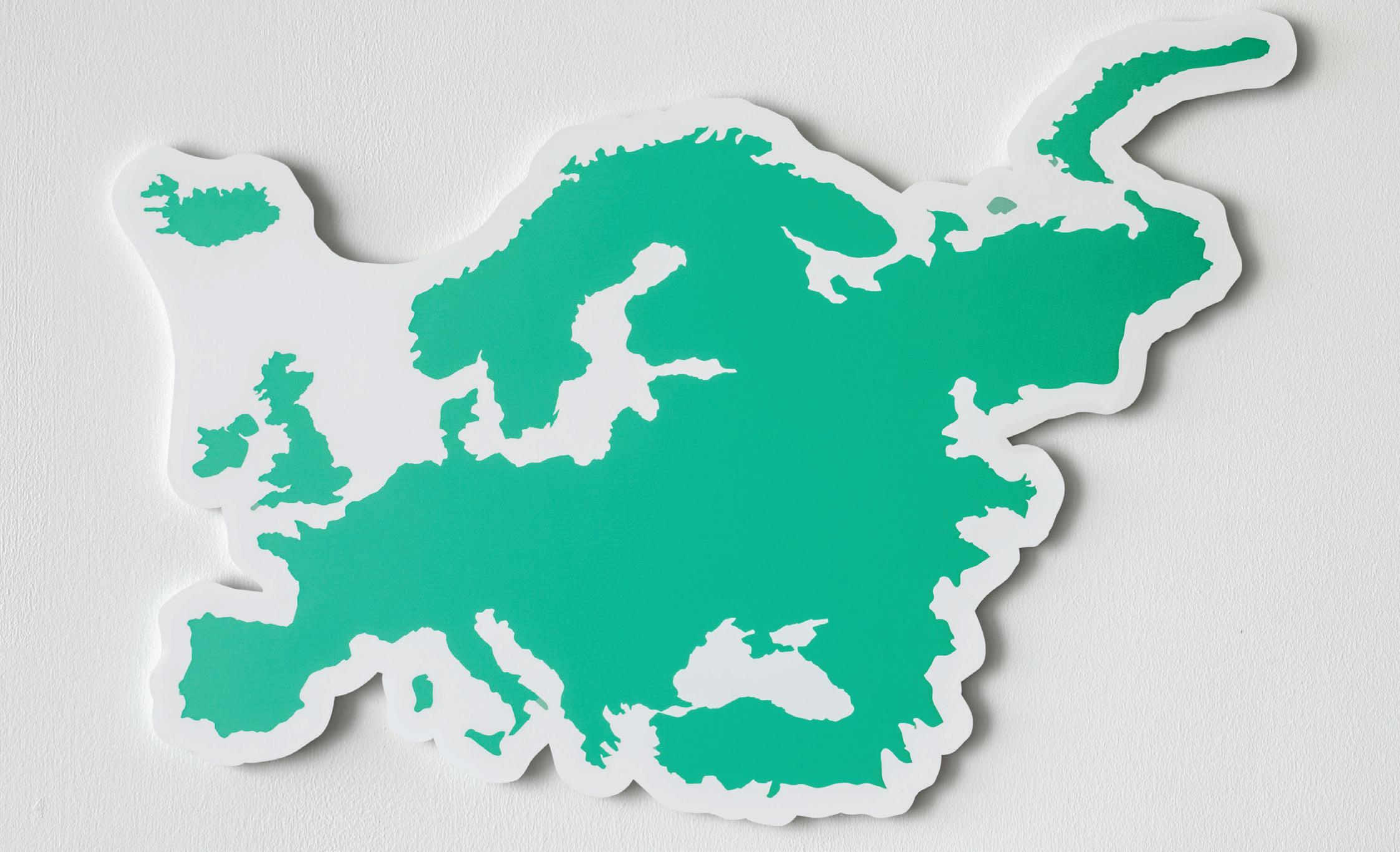
The volatile climate conditions that the world has experienced in the past few years have seen farmers produce at variable yields.
However, yields must improve to meet the growing demand for food while reducing land used for crops.
23 tradefinanceglobal.com
FEATURED
To do this while meeting all parts of the EU Green Deal - including the call on countries to reduce dependency on pesticides and excess fertiliser use - more resilient seeds and plants need to be developed.
Consumers must be ready to accept more genetically modified seeds and plants and change their dietary habits accordingly.
However, while recognising the need to move to a more plantbased diet with less processed meat, the Green Deal strategy does little to suggest how it will promote the health benefits of these changes.
Far more is needed to promote the importance of healthy diets.
Retailers and consumers have a part to play, but the real onus lies with EU and local policymakers to create a standardised framework for action.
Humankind’s commitment to the future
This EU Green Deal strategy will require massive investment and its deployment will require the mobilisation of a high percentage of public resources.
To meet this deal is not without sacrifice, and that could be a hard sell in the current environment, but one that is ultimately needed to be made.
Policy-makers must increase budgets for sustainable projects, education, and innovation, all while maintaining enough cash to support those citizens at risk of not being able to put food on the table or heat their homes this winter.
But it is not just governments that have a role to play.
Even though a large part of the investment will come from the public sector, the future state of the planet also requires support from the private sector.
Companies must understand the potential of embracing a sustainable economy and begin to prioritise sustainable investments to meet the demands of an increasingly aware society.

The European Green Deal provides opportunities for future generations to meet their needs, for Europe to lead the fight against climate change, and to drive cooperation between countries.
This is our commitment to the future, our children’s children, and beyond.
24 TRADE FINANCE TALKS tradefinanceglobal.com
2.6
Data standards: a key to a truly sustainable trade
PRADEEP NAIR
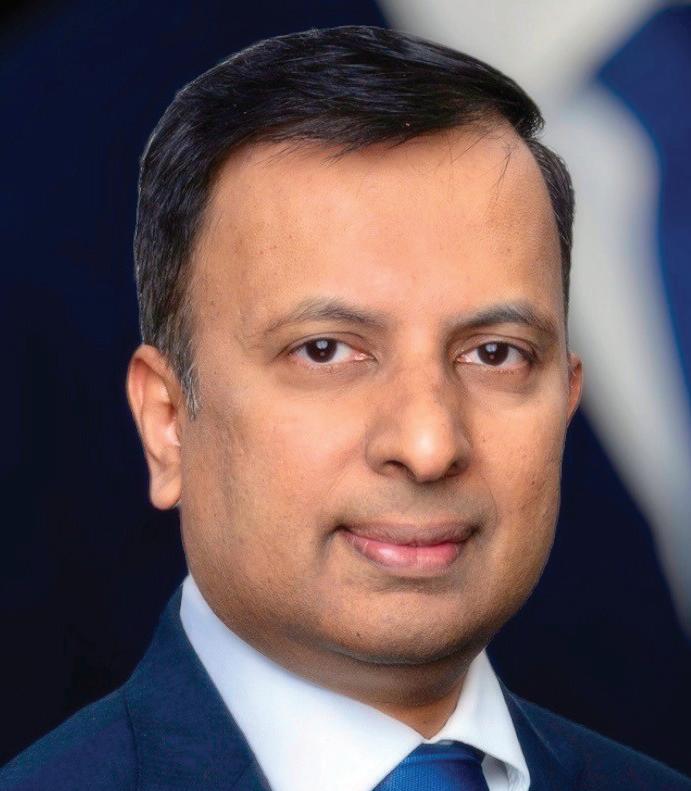
Companies around the world are almost unanimous in their desire to make their supply chains more responsible, resilient, and futureproof––no matter the sector or the region they operate in.
To better support them in their journey and for this to scale, however, the trade finance sector needs a universal framework for environmental, social, and governance (ESG) data.
Standard Chartered recently surveyed more than 500 C-suite and senior leaders as part of its Future of Trade 2030 report.
Its findings are encouraging: global trade is moving rapidly towards a new, more sustainable and inclusive paradigm.
However, although 9/10 of respondents acknowledged the need to incorporate ESG standards and practices across their supply chains, many do not have a clear view of what they need to do to achieve their goals.
The main reason for this is a lack of definitions around what ESG in trade actually is.
Lack of ESG clarity is a data problem
This is a data problem: there is no uniformity in either the inputs --that is, the metrics used or the data that need to be collected-or the outputs.
As a result, there’s no real way for companies to identify which areas they need to improve upon or benchmark themselves against others.
For banks looking to support their clients on the journey towards creating a more equitable, climate-sensitive, global trading system via sustainability-linked financing, this poses a serious challenge.
If a bank wishes to ascertain the credit risk of a client, it relies on ratings. While the output of each credit assessment, for example, BBB+, Baa1, or P2, depends on the model used, the inputs are governed by accounting standards, meaning they come from the same set of information.
25 tradefinanceglobal.com
Global Head of Structured Solutions and Development Standard Chartered Bank
For sustainable trade finance to scale, the industry needs a uniform model for ESG data that can be used by everybody.
FEATURED
The ESG landscape, in contrast, does not currently have any such uniform standards. Instead, there is a patchwork of different measures covering numerous sustainability metrics––some areas have no standards at all. For carbon emissions, companies can use the GHG Protocol Corporate Standard, but while this covers the accounting and reporting of emissions, it does not provide granularity on how firms should conduct the verification process.
For other environmental and social issues in the supply chain, there are myriad areas to focus on. Each company at present has the freedom to effectively self-select the details that they believe to be material, leaving them open to claims of ‘greenwashing’.
Companies want to be able to understand their ESG risks and have conversations with their banking partners as to what solutions can be offered to mitigate them.
But with hundreds of different assessment techniques, scales, and ways of looking at ESG in trade––each capturing certain metrics and omitting others to give a red, amber, or green ESG score, or a rating of A or 1––every sustainability-linked trade and supply chain finance facility becomes a bespoke deal.
The lack of standards creates challenges for SMEs
This is fast becoming a major problem for SME suppliers, who should be the largest beneficiaries of sustainabilitylinked supply chain finance.
Often, a supplier may be catering to multiple buyers, each with different ESG criteria.
Without clear standards and an agreed-upon format, the amount of work that must go into acquiring the information required is significant, and this can create a barrier to accessing the financing that is needed.
A uniform model requires a collective effort
Through its sustainable trade proposition, Standard Chartered is aiming to address this confusing landscape.
Launched at the beginning of 2021, the proposition embeds measurable metrics that are aligned to external benchmarks across four pillars: sustainable goods, sustainable suppliers, sustainable end-use, and transition industries.
However, Standard Chartered cannot do this alone. For sustainable trade finance to scale, the industry needs a uniform model that can be used by everybody.
This is why the International Chamber of Commerce’s (ICC’s) recent work has been welcomed; they have created the firstever standardised assessment methodology to qualify the sustainability profile of trade transactions, industry-wide.
The opportunity is enormous. The rise of digitalisation in trade and the growing adoption of tools that can be leveraged for the attribution of ESG data at the transaction level are laying the ground for all participants in trade to collect and share information on their sustainability performance, allowing for meaningful change across supply chains globally.
But the data they share needs a framework.
This needs a home.
According to Standard Chartered’s research, global exports will rise from $17.4 trillion to $29.7 trillion over the next decade, with this upward trajectory bringing along new prospects for more inclusive, equitable growth.
An industry-wide model for ESG data will unlock the true power of trade as a force for good, as long as everyone adopts it.

26 TRADE FINANCE TALKS tradefinanceglobal.com
MICHELLE KNOWLES

Pan African Head of Trade Finance
Product
Absa Corporate Investment Banking
2.7
African trade finance enters an exciting new phase
Closing Africa’s $100 billion trade finance gap is going to require alignment across a number of ecosystem elements.
It is often debated whether the reported existing trade finance gap, which over the last 3 years has oscillated between $100 billion and $120 billion, will diminish or whether the nature of illiquid, growth-focused, emerging market economies means that the gap will never truly close.
Before 2020 and the COVID-19 pandemic, there had been some meaningful progress; the trade finance gap had dropped to $81 billion. If we can get back to these kinds of levels, a $20-30 billion injection into the small business sector will be welcomed.
However, 2022 has thus far shown no signs of such a return. The world today looks very different, with geo-political uncertainty in Ukraine, Russia, China, and Taiwan, amongst others.
This, in turn, has seen spiralling input costs and constraints on supply chains. Considering that a lot of emerging market debt is dollar-based, this again puts pressure on the trade finance ecosystem.
This is perfectly highlighted through a case study of a South African client whose core business was disrupted by events in Ukraine.
The steep increase in input costs and the knock-on impact on escalating freight costs meant that the client had to reinvent its business model completely.
Absa increased an import letter of credit facility from 1.8 billion rand (R) in 2021 to R6.5 billion in 2022 in response to the evolving environment.
The result of this was that the client saw a rise in profitability while maintaining its leading position in the South African market, in addition to a growing market share in Mauritius and The Democratic Republic of Congo.
Surging inflation and rising input costs, coupled with the Central Bank tightening, are likely to result in pressure on emerging market businesses that had just begun to rebuild their balance sheets.
Avoiding a situation where banks start withdrawing credit at a time when businesses are cashhungry is paramount, especially when these businesses are only just beginning to take advantage of an economic recovery.
Here, it is important to reiterate that, by its nature, trade finance is less risky than other types of financial support for importers and exporters.
27 tradefinanceglobal.com
FEATURED
According to the African Development Bank (ADB), the average approval rate for trade finance transactions was 88% in 2019, while the average default rate on trade finance between 2017 and 2019 was 7.5%, compared to 11% on other types of non-performing loans.
In Southern Africa, this number was as low as 2% over the period spanning 2011 to 2019. This highlights the power of getting liquidity into the right places in the system, showing how economic activity can be unlocked without the burden of excess risk.
Fortunately, we live in a world which is constantly evolving, and countries will continue to both import and export their goods, particularly as the African continent develops economically.
Furthermore, there have been meaningful developments in terms of digitisation, liquidity, financial inclusion, and involvement from Development Finance Institutions (DFIs) to enhance Africa’s growth prospects.
Jeff Gable, the chief economist at Absa, shares this sentiment, saying, “Despite supply-chain and other global challenges, Africa’s trade flows have really accelerated significantly.
“International Monetary Fund (IMF) data show that the dollar value of Africa’s exports to the world have increased by more than a third over the last year and are up by more than half from pre-pandemic levels.
“Africa is showing similarly exciting increases in trade values within the continent as well, with exports up 37% in the first quarter of 2022 as compared to a year ago, and up more than 40% postpandemic.”
Approximately 60% of banks that engaged in African trade finance activities received some sort of support from DFIs.
This highlights just how close the relationships between these parties are and why there is excitement around some of the innovation and interest from the DFIs who are focusing time and resources on this market sector.

For instance, the ADB recently approved a $175 million regional trade finance facility for Eastern and Southern Africa, specifically a “strategic effort by the ADB to support the Africa Continental Free Trade Area’s agenda of reshaping markets and economies across the region by helping to boost output in the services, trade, manufacturing, and natural resources sectors.“
This deal is expected to release $2.1 billion in value over the next 3 years.
Absa believes that increasing access to trade finance represents one of the most critical focus areas, with a potential to unlock significant economic activity at relatively low-risk.
28 TRADE FINANCE TALKS tradefinanceglobal.com
Over 270 banks, funds & alternative lenders partner with TFG to finance transactions

29 tradefinanceglobal.com
in trade, receivables and scf Why don't you? partners@tradefinanceglobal.com

EMERGING MARKETS

3
GEORGE WILSON Head Institutional Trade Finance Investec

3.1
African access to trade: SMEs, FX, and sustainability
African small businesses face considerable FX challenges on their path to exporting, contributing to a widening finance gap.
Developments in the African market have taken centre stage in the trade finance industry lately, but this has not done much to dispel the hurdles that the market faces.
With a global energy and food crisis peaking, alongside hiking inflationary rates and geopolitical tensions, it may seem that the road ahead for the African continent is not as straightforward as one would hope.
Speaking to George Wilson, head of institutional trade finance at Investec, Trade Finance Global (TFG) was able to find out more about the African eco-system.
FX and access to trade finance
have had little in the way of a natural source of US dollars, relying on their exports to sustain central bank reserves and their much-scrutinised FX import cover.
Developing economies simply do not export enough in dollars to provide sufficient FX, and the impact is very real for SMEs that provide the bulk of the employment in Africa.
Wilson said, “African countries don’t export enough in dollars to generate the dollars that they need to pay for their imports.
ANASTASIJA KOVACEVIC Junior Editor Trade Finance Global

Dollars have always been scarce and expensive for banks and businesses on the continent to obtain.
Now, as global central banks hike rates to rein in inflation, and businesses battle with sourcing goods through strained supply chains––exacerbated by the Russia-Ukraine conflict and China’s lockdowns––Africa finds itself with a growing problem: accessing US dollar liquidity. Historically, emerging markets
“There is also a thriving market for structured letters of credit [LCs], which is essentially a method that African countries and African banks can use to import shortterm trade-tenor dollars into their countries.”
Despite the improved liquidity gained from the structured LC and trade refinance markets, the dollar timing and availability to African banks’ treasuries still fall short of what is required to support critical trade finance.
32 TRADE FINANCE TALKS tradefinanceglobal.com 32
Moreover, steep inflation rates have significantly hiked prices of essential imported food and energy commodities, exacerbating issues surrounding dollar shortage.
African SMEs: closing the trade gap
The primary cause of the trade finance gap in Africa is the inability of SMEs to obtain trade credit and FX from their financial institutions.
Furthermore, global banking regulation is the root cause of the unavailability of trade facilities from African banks to their SME clients.
To function at all, these SMEs need access to trade credit and FX from their banks. Still, these local banks have limited access to dollars and high capital costs––largely due to the extraneous Basel regulatory capital and US dollar liquidity. Overall, these facets make it unprofitable for banks to provide trade facilities to their SME clients.
African banks have limited interest in investing their finite dollar liquidity and capital in ‘risky’ SMEs, with the return of equity (ROEs) way below their cost of equity. Instead, it is a much more attractive option to buy government bonds––completely risk-free––and earn a 15% return.
These are commercial banks which must be mindful of shareholder interests, and, thus, the only responsible policy is to avoid trade finance altogether––hence the trade finance gap.
Wilson said, “The trade finance gap…pre-COVID was estimated to
be around $120 billion. It’s almost certainly north of that now [due to] the Russia-Ukraine conflict and the dollar liquidity situation.”
Despite this persistently large trade finance gap, trade remains a key driver of Africa’s social and economic development.
Sustainability: a channel for African SMEs?
There is a danger that wellmeaning international sustainable development goals (SDGs) and environment, social, governance (ESG) requirements may actually heighten the trade finance gap and limit funding even further to African SMEs.
There is an emerging risk that the environmental element of ESG completely precludes and overrides the social and governance aspects, not to mention the United Nations’ (UN’s) 17 SDGs.
The harsh reality is that much of the continent depends on extractive industries for survival, with Africa currently running on diesel and coal––albeit contributing only 3% of emissions globally. Shut these off, and fragile economies won’t just falter and fail, but people will suffer.
Trade is estimated to contribute up to a third of gross domestic product (GDP) growth in developing African economies, SMEs employ as much as 85% of the population, and trade is the ultimate supply mechanism for food security, health, industrialisation, and infrastructure in African economies.
Wilson added, “There are billions, perhaps trillions, of dollars in
the impact and alternative investment market looking for an ESG, or sustainable, home for their investment dollars. It could very elegantly solve the trade gap and provide them with safe, really sustainable, financing opportunities and investments.”
Industry policymakers and traders worldwide can look toward the 2021 ICC Standards for Sustainable Trade and Sustainable Trade Finance positioning paper as a marker of sustainable trade’s parameters.
The ICC’s roadmap to sustainability in the trade sector is a step in the right direction for the developed market, but there needs to be more input from emerging markets and, specifically, African trade finance.
As such, under the auspices of the African Regional Committee, ITFA will soon be releasing a positioning paper on ‘Sustainable Trade Finance and African Trade’, which intends to amplify the African voice in the proposed standards for sustainable trade finance.
This will hopefully help improve delivery on all of the UN’s SDGs through African trade, reduce the trade gap, and leverage the full benefit of the burgeoning African Continental Free Trade Area (AfCFTA) developments.
Watch the full video interview at tradefinanceglobal.com
33 tradefinanceglobal.com
EMERGING MARKETS
ANASTASIJA KOVACEVIC Junior Editor Trade Finance Global


3.2
International trade, sustainability, digitisation in Armenia
TFG interviews Ameriabank about Armenian supply chains, COVID-19 recovery, digital transformations, and more.
The global trade finance industry has seen significant shifts over the last few years.
The pandemic’s impact on the trading landscape acted as a double-edged sword; on the one hand, the adoption of digital tools was expedited, and on the other, supply chains suffered under the strain of lockdowns.
The year 2022 has added to such complications, seeing global food and energy crises, high inflation rates, and geopolitical challenges stemming from the RussiaUkraine conflict.
To gain an insight into how this affected the banking terrain in Armenia, Trade Finance Global’s (TFG) spoke with Gayane Mirzoyan (GM), head of the payment instruments and escrow division at Ameriabank. Mirzoyan’s expertise extends to letters of credit (LCs), bank guarantees, documentary collections, escrow services, and import and export financing.
Can you tell us a little bit more about Ameriabank?
GM: Ameriabank is the largest financial institution (FI) in Armenia, offering corporate, investment, and retail banking services.
In 2021, Ameriabank was the first in the market by key financial performance indicators with the following market shares: assets (15.6%), liabilities (15.9%), loans (16.9%), equity (14%), and net profit (23.4%).
In recent years, Ameriabank has continued efforts toward digital transformation, improving efficiency during the pandemic and increasing demand for digital services.
Driven by growing consumer demands, the bank has developed and launched a digital ecosystem covering virtually all banking services.
34 TRADE FINANCE TALKS tradefinanceglobal.com
GAYANE MIRZOYAN
Head of the Payment Instruments and Escrow Division Ameriabank
What does the current trade and supply chain finance landscape look like from an Armenian perspective?
GM: The Armenian trade and supply chain finance market is represented by banks with a full spectrum of products in line with international rules, regulations, and local legislation.
Armenia is primarily an importing country but has seen rapidly growing export levels in recent years; larger local companies have become more informed, actively using trade and supply chain finance tools to facilitate their operations.
The demand has also been growing among small- and medium-sized enterprises (SMEs) that use such tools for transactions with new counterparts, receiving better trading terms and financing in more convenient conditions.
Armenian banks support SMEs by offering services tailored to their unique needs.
How do you think that COVID-19 impacted banks and trade finance in emerging markets?
GM: In general, COVID-19 and the Russia-Ukraine conflict have negatively impacted banks in emerging markets.
COVID-19 introduced restrictions worldwide, raising concerns about the timely delivery of products and services.
Lockdowns imposed by governments caused companies to bear tremendous losses, disrupting operations and supply chains.
However, Armenia saw the introduction of several governmental programs to help companies cope with the consequences of the lockdowns and delays.
These new measures, combined with the support programs adopted by local banks, allowed the most vulnerable companies to overcome challenges. In turn, banks began to look for ways to revise and diversify their trade finance business.
Despite the pandemic, in 2021, Ameriabank sustained strong results, with the bank remaining the Armenian trade finance market leader.
Additionally, Ameriabank is actively involved in trade facilitation programs with all major international FIs, including European Bank for Reconstruction and Development (EBRD).
In addition to its issuing bank status with many international FIs, Ameriabank is the first Armenian bank to receive confirming bank statuses under the EBRD’s Trade Facilitation Program (TFP) in 2013 and under the Asian Development Bank’s (ADB’s) TFP in 2018.
What is your view on the impact of the recent Russia-Ukraine conflict on banks and trade finance in your market? How has this impacted clearing, access to foreign exchange (FX) services, and settling international payments?
GM: From a trade finance perspective, the main difficulty in Armenia is blocked transportation routes. Companies have been bearing additional costs to change usual routes and bypass conflict regions.
Simultaneously, with the introduction of new sanctions on Russia, intermediary banks took a somewhat evasive approach to transactions for parties related to, or routes involving, Russia--irrespective of whether such parties or goods fell under sanctioned lists.
The same situation happened with international companies covering the Armenian region, with offices in Russia. Here, once again, the intermediaries would reject such transactions.
This catalysed a shift wherein businesses considering trade finance products looked for alternative business opportunities with new partners, via new routes and in new countries.
Ameriabank has provided continuous support to its clients and worked out quick solutions to maintain the business continuity of client operations.
How can digitisation help innovate in cross-border payments and escrow banking?
GM: As international e-commerce is growing exponentially, crossborder payments have become well-integrated into the daily operations of businesses.
Digitalisation and innovation have become pivotal components for improving the customer experience. The primary focus on improvement is to secure seamless, instant, and cheaper cross-border payments for the banks to remain competitive among peers and keep pace with technological change in the global marketplace.
35 tradefinanceglobal.com
EMERGING MARKETS
Some of the latest technologies --such as machine learning, artificial intelligence (AI), application programming interface (API) connectivity in payments, virtual account management, and digital escrow––are considered the directions the banks are leveraging.
All of these features are aimed to ensure visibility and transparency of payments and decrease risk exposure and process complexity.
Beyond the customer experience and retention benefits, digitalisation of the transactions allows FIs to expand into new markets and ultimately achieve a better return on investment (ROI).
What are your thoughts on CBDCs?
GM: The rapid spread of cryptocurrencies issued by private businesses has prompted central banks worldwide to adopt their own central bank digital currencies (CBDCs).
The primary rationale behind this is a desire for better control over the currency. Like many central banks, the Central Bank of Armenia has considered a concept of its own digital currency, but not much progress has been made in this direction yet.
Some of the benefits of central banks issuing digital money include better-regulated options for using digital currencies, reduced inefficiencies, and shortened payment value chains.
Central banks can also offer better-controlled options for using digital currencies to reduce inefficiencies and shorten the payments value chain.

It is clear that CBDCs make transactions straightforward and offer financial inclusion for people without physical access to banking.
However, most concerns and ongoing debates are focused on the high volatility and risks associated with digital currencies issued by regulators, particularly privacy risks for citizens and security issues.
What does the future of banking look like in Armenia? Where are the growth areas?
GM: Armenia has a strong and relatively stable financial system dominated by well-capitalised banks.
Tested against COVID-19 and post-pandemic economic shocks, this assured stability will be integral for further development.
Among other challenges, banks are facing changing consumer behaviour. The digitalisation of financial services allows banks to embrace new technology, rapidly integrate new digital services, and shift to a more flexible organisational structure, including governance and risk management policies.
As the leading bank in the country, Ameriabank, for several years now, has invested considerable financial and human resources in its digital transformation.
This includes upgrading all of the components mentioned above and creating seamless digital solutions across a range of financial products, all to secure a leading position in the technologically-enriching banking industry for the coming years.
36 TRADE FINANCE TALKS tradefinanceglobal.com
3.3
Banking in the Kyrgyz Republic, Optima Bank OSJC
TFG interviews Optima Bank to learn about the economic challenges facing banks in the Kyrgyz Republic and strategies for overcoming them.
The world of trade finance has experienced significant fluctuations as of late. Whether it be the after-effects of COVID-19, the geopolitical climate, or rising inflation rates, the trade industry has seen many changes as a consequence of all these elements.
In preparation for the 2022 EBRD TFP Trade Finance Forum, held in Istanbul, Turkey, Trade Finance Global’s (TFG) Annie Kovacevic sat down with Chynara Alybaeva (CA), head of global transaction banking department at Optima Bank OJSC, to learn more about the banking sector in the Kyrgyz Republic.


Alybaeva’s role spans documentary operations and correspondent relationships, allowing for a comprehensive overview of the banking network on a national level.
Could you expand a little bit more on Optima Bank? Where do you operate?
CA: Optima Bank is a universal commercial bank operating in the Kyrgyz Republic. The bank has recently strengthened its position in the Kyrgyz Republic market, gaining a reputation for garnering
reliable partners, and holding both client and shareholder interests in high regard.
The main priority of Optima Bank is high-quality banking services and dynamic development.
Over the last 30 years, Optima Bank has maintained strong foundations as a financial institution (FI), sustaining a sound balance sheet structure, a diversified credit and deposit portfolio, and well-balanced geographical coverage throughout Kyrgyzstan.
Can you give us an overview of the transaction banking landscape in the Kyrgyz Republic? What are the key challenges and risks?
CA: Currently, the main activities of Kyrgyz commercial banks are;
• Increasing the amount of deposits
• Settlement and cash services
• Loans (consumer, mortgage, business development etc.)
• Foreign exchange (FX) transactions
• Cross-border payments
• Documentary operations
37 tradefinanceglobal.com
CHYNARA ALYBAEVA Head of Global Transaction Banking Department Optima Bank OJSC
ANASTASIJA KOVACEVIC Junior Editor Trade Finance Global
EMERGING MARKETS
Optima Bank’s current strategic trajectory is to ensure free access for the population to banking services, not only in cities but also in rural and isolated areas of the Kyrgyz Republic.
The external environment requires the banking system to be more dynamic. Implementation of the state program and alternate measures to optimise monetary circulation will ensure:
1. Increase in the percentage of non-cash payments, reduction of the shadow turnover of cash in the economy,
2. Anti-money laundering (AML); legalisation of financial transactions,
3. Further development of the legal framework for banking legislation and supervision.
However, a considerable hurdle for the financial development of commercial banks in the Kyrgyz Republic is the current global geopolitical terrain––namely, the Ukraine-Russia conflict.
The economy of the Kyrgyz Republic depends on external
financial support, including the Russian market. This new landscape has created an environment where FIs are now especially careful when working with new customers and counterparties.
Other knock-on effects include; a longer execution period for foreign currency payments due to a decline in international correspondent banking relationships. This has led to an additional layer of tightening requirements for cross-border payments.
What impact has COVID-19 and the current Russia-Ukraine conflict had on banks, more specifically, banks in the Kyrgyz Republic?
CA: One of the main impacts of the coronavirus pandemic on the banking system is the relative deterioration in the quality of loan portfolios.
Whilst a difficult burden to manage, it was not entirely unexpected with quarantine measures and border closures creating derivable negative
effects on businesses and on the income of borrowers (legal entities and individuals).
In addition, the turnover of goods and services decreased significantly against the backdrop of a moderate reduction in money transfers and private capital inflows, while increasing payments on obligations.
In 2022, sanctions against Russia led to uncertainty. There were significant after-effects, notably the freezing of Russia’s dollar assets and an increase in energy prices, which ultimately caused strong volatility in the FX markets, including in Kyrgyzstan.
Despite the worldwide negative repercussions of contemporary global economic instability, political risk, and volatility of foreign currencies (the dollar, ruble, euro and tenge), there has been a rapid growth of the banking sector’s profits.
At the end of June 2022, the net profit of commercial banks in Kyrgyzstan increased 4.4 times compared to last year. This increase was attributed to
38 TRADE FINANCE TALKS tradefinanceglobal.com
exchange operations with foreign currency, enabling commercial banks to receive most of their income.
How has Optima Bank helped local businesses to gain better access to finance?
CA: The Ministry of Finance of the Kyrgyz Republic disburses concessional loans through commercial banks, including Optima Bank, to support the production industry and the agriculture sector.
We understand that one of the successful indicators of the bank’s activity is a wide client base, which is growing every year, as well as a constantly expanding range of services.
Therefore, Optima Bank conducts regular loan/credit card promotions for its customers. In order to provide additional support to local entrepreneurs, Optima Bank provides deferrals for loan repayments, offering flexible repayment schedule if necessary.
What impact has the cutting of correspondent banking relationships had on Optima Bank’s clearing, access to FX services, and settling of international payments?
CA: Kyrgyz banks hold most of their correspondent accounts with Russian banks, using both the euro and the dollar.
Given the current situation, banks have had to transfer resources from state-owned banks in Russia to private banks, which are not yet under sanctions.
Taking into account longterm cooperation with foreign partner banks, Optima Bank has subsequently developed direct correspondent accounts in Europe and Asia. This allows the bank to provide uninterrupted clearing services to clients in foreign currency.
However, on a more general scale, the situation has been quite complicated. As mentioned previously, there has been a trend of declining international correspondent relationships, with the forecast for Kyrgyz correspondent accounts looking to suffer a similar fate.
The US government has included most of the Commonwealth of Independent States (CIS) in the list of transit countries, through which sanctioned goods may enter Russia.
In case of violation of sanctions, secondary sanctions will follow. Therefore, the Compliance Control Department has tightened vigilance over opening accounts for new customers.
What can multi-laterals such as the EBRD do to support your banking efforts?
CA: Optima Bank is open to mutually-beneficial cooperation with multi-lateral institutions.
The European Bank for Reconstruction and Development (EBRD) is one of the key partners of Optima Bank. Most collaborations fall under the field of lending, co-financing, and trade finance.
Optima Bank is also a participant of the EBRD’s KyRSEFF program––a program backed by the EBRD seeking to finance sustainable energy in Kyrgyzstan.
39 tradefinanceglobal.com
EMERGING MARKETS
The Russian Kyrgyz Development Fund (RKDF) provides financing for those projects. Aside from the commercial benefits for the owners, this initiative will have a positive impact on the overall economy, creating more jobs, increasing tax payments, improving imports and exports, and positively impacting the development of local communities.
Particular emphasis has been given to the projects aimed at propelling rational use of resources and energy, waste reduction, processing, regeneration of resources, and using environmentally friendly technologies.
With half of the micro-finance sector’s credit sources coming from international donors, how can we be sure to support SMEs in this current economic climate?
CA: Small- and medium-sized businesses (SMEs) are a powerful factor in the country’s economic development. They occupy about 60% of the client base of banks and, accordingly, the banks are interested in financing such clients as they are highly profitable.
The main priority areas for SMEs in the Kyrgyz Republic are agriculture, industry, trade, car repair, hotels and restaurants, transport and communications, financial activities, real estate transactions, education, healthcare, alongside social and personal services.
Kyrgyzstan is a member of more than 70 international organisations. These international organisations also support and finance SMEs in Kyrgyzstan and play an important role in the development of SMEs in the state.
What steps have been taken to introduce green finance or green financial products?
CA: Optima bank always supports the loans with a “green clause” placing them as a priority. With the support of EBRD (KyRSEFF program) and RKDF, Optima Bank implements energy and heat saving projects in apartments/ houses, lighting and sewerage improvement systems in hotels, planting of trees, and the modernisation of excised hydroelectric power plants.
One notable example is the treeplanting project in the Issyk-Kul region, amounting to the planting of 17 thousand Paulownia trees.
Paulownia trees are famous for their fast growth; an added bonus comes in the form of their leaves, as they can be used as animal feed.
Reaching a maximum height of 15-17 metres, this tree lives up to 70 years. Paulownia also processes ten times more carbon dioxide than any other tree and therefore releases more oxygen.
Paulownia’s wood is valued all over the world for its durability and lightweight.
What does the future of transaction banking look like in the Kyrgyz Republic?
CA: A few years ago, it seemed impossible for us to pay for purchases by attaching a smartphone to the terminal. COVID-19 and quarantine measures have undoubtedly accelerated digitalisation.
The new digital reality and highly competitive environment are forcing banks to move to the client side. It has increased user accessibility, allowing clients to choose the most convenient bank with the best online banking platform without much effort.
The digitalisation of banking services will optimise processes and facilitate the access of the population to banking services, including those regions in the country where banking penetration is insufficient.
It will additionally provide an opportunity to increase online operations, as well as simplify access to banking services and develop distance sales channels.
Therefore, along with the development of digitalisation of banking services, commercial banks need to modernise their automated banking systems in accordance with the requirements of international standards.
40 TRADE FINANCE TALKS tradefinanceglobal.com
ANDY ROMANOV Deputy Head of Trade Finance Ukrgasbank

3.4
Trade finance in Ukraine: a rallying call for industry members
VLADISLAV BEREZHNY Director of Trade and Structured Finance Credit Agricole


The humanitarian and economic war between Russia and Ukraine has sent ripples all around the world, with practitioners, financiers, and governments urgently stepping in to try and help.
Boosting and restoring trade exports will be key for Ukraine, as well as ensuring a safe entry route for trade imports.
The European Bank for Reconstruction and Development (EBRD) has been one such organisation, actively stepping up to support the country which has become one of its top investment destinations, second only to Turkey.
To gain insight into the trade and structured finance landscape of Ukraine currently, Trade Finance Global’s (TFG) Deepesh Patel sat down with Andy Romanov, deputy head of trade finance at Ukrgasbank, and Vladislav Berezhny, director of trade and structured finance at Credit Agricole.
Both Romanov and Berezhny will be speaking at EBRD’s flagship Trade Facilitation Programme (TFP) conference in Istanbul.
TFG are a proud media partner of EBRD.
The changing trade and trade finance landscape in Ukraine
The trade and trade finance markets in Ukraine prior to 2015 grew and developed very slowly, but the years 2015-2019 saw rapid development in terms of imports and exports.
In 2017, Ukrainian exports reached around ₴143 billion (hryvnias) and imports amounted to ₴162 billion, figures that were surpassed in both 2018 (when they were ₴160 billion and ₴191 billion, respectively), and 2019 (which saw ₴164 billion and ₴195 billion).
2020 started well, but the COVID-19 pandemic disrupted this growth pattern, as it did for so many other nations and industries at that time.
Nevertheless, export remained at ₴164 billion and, likewise, imports stayed at ₴168 billion by the end of 2020, rising again to ₴221 billion and ₴222 billion respectively in 2021.
41 tradefinanceglobal.com
Ukranian bankers call on the international finance community to support the nation by keeping banking lines open.
DEEPESH PATEL Editorial Director Trade Finance Global EMERGING MARKETS
growth
In Ukraine, however, trade finance and trade differ significantly, with the former lagging behind the latter.
This is partly because Ukraine often feels the impact of global crises quite strongly, with the international banking community closing or limiting lines to Ukrainian banks.
This often means that, despite the large import and export volumes, the financing lines are simply not always there to support them. There is also a need to boost Ukrainian trade finance through further regulatory and marketing instruments, promoted by Ukrainian Alliance for Trade Finance and Factoring (UATFF), the interbank trade finance lobby.
At the end of 2021, the country reached around ₴100 billion in total trade finance, with the Ukrainian banking community working closely with the international and trade finance banking sectors to help bring more credit into the country. But February brought with it a turning of the tides.
growth
Within one month of the war starting there was a 10% drop in trade finance portfolios, and a substantial decrease in origination due to seaport blockades and other military activity.
Berezhny said, “We expect that by the new year the volume of trade finance portfolios will decrease by a further 20-30%. Nevertheless, the majority of leading banks’ trade finance commitments continue to contribute to the general stabilisation of the business environment.
“Nevertheless, the majority of leading banks’ trade finance commitments continue to contribute to the general stabilisation of the business environment.”
High interest rates in Ukraine and market adjustment to the current geopolitical conditions
Thankfully, trust in the Ukrainian banking system has remained high, meaning that there has not been a run on deposits. Regulatory changes to ensure
economic structures were upheld were enacted upon the initiation of the war.
Unfortunately, rising interest rates are making it more difficult for businesses to secure necessary business loans.
On June 2, the interest rate in Ukraine was raised from 10% to 25% to ease pressure on the foreign exchange (FX) market and fight inflation.
On July 21, the hryvnia-dollar FX rate was lowered to 36.5: 1, a 25% decrease since the beginning of the war.
Such steps were enacted by the National Bank of Ukraine (NBU) to stabilise the FX market, helping to increase the supply of foreign currency in the country.
Deposit rates are now at 13-17% per annum with loan rates sitting at, or above, 20%.
42 TRADE FINANCE TALKS tradefinanceglobal.com
0 ₴ 50 ₴ 100 ₴ 150 ₴ 200 ₴ 250 ₴ 2017 2018 2019 2020 2021 IMPORT AND EXPROT GROWTH (BILLION) Ukranian imports and exports grew from 2017-2021 Export
Import
For Ukrainian businesses, these rates are very high and bankers anticipate that it is likely to lead to a significant decrease in bank loan portfolios throughout the country, as well as the banking system’s overall liquidity.
To help alleviate some of the pressure on businesses, banks have been instituting payment holidays, agreed by NBU in a package of anti-crisis measures. At this point, it is still unclear the impact this has on the aggregate economy as the situation is continually evolving.
The response from the international banking community
Banks need to continue providing clients in the Ukraine region with the same level of support that they were receiving prior to February 24.
However, the entire situation, including the levying of sanctions against Russia, has made the role of bankers more difficult than it was before, especially for trade finance transactions.
International banking groups present in Ukraine have demonstrated a strong commitment to support their subsidiaries and customers through continued lending. Therefore, despite constraints, international trade finance operations have continued.
The reality for many local banks is that direct interbank trade finance transactions without cash-cover are now closed. The cost of financing has also increased, although this is generally considered to be a global trend.
This adds additional pressure on Ukrainian businesses to stay afloat.
According to Romanov, however, many multinational financial institutions, like the EBRD, have performed their functions both timely and effectively.
Romanov said, “We are very grateful to the EBRD and everyone who now supports Ukrainian banks, customers, and Ukraine in general during this challenging time for our country.”
Changing relationships
It should come as no surprise that periods of economic stress and unrest––as Ukraine is currently experiencing––are not well suited to the acquisition of new clients.

However, during difficult times such as these, it is common to see companies that have had relations with certain banks in the past––but perhaps not actively at present––return to rekindle these relationships as they now need all of the support that they can get.
This is particularly the case with banks that have a strong reputation for delivering on promises made to clients.
This type of pattern, which is being seen today, is not new to experienced practitioners in Ukraine, who will have witnessed similar behaviour throughout the country’s economic challenges inflicted by either global events like the financial crisis of 2008, COVID-19, or the Russian intervention of 2014.
This has put many bankers in a position to consider the return of these old business relations and how they might be restructured to meet the current needs faced by the market without interrupting trade and business relations.
This culture of resilience, which seems to be shared by the top Ukrainian banks, is a large reason why trust has remained high.
Looking ahead, both Berezhny and Romanov call on the international banking community to keep lines to Ukraine open.
They can be small and they can be limited, but in order for Ukraine to continue on despite the pressure of the conflict, they need to have that lifeline of support coming from abroad.
43 tradefinanceglobal.com
EMERGING MARKETS
TULKIN YUSUPOV Executive Director Sanoat Energetika Guruhi (SEG)
3.5
Uzbekistan’s largest oil and gas company on digitisation, ESG, geopolitics
SEG looks beyond quick IT wins to invest more of its long-term digitalisation strategy
From the green transition to the energy crisis, oil and gas companies are increasingly finding themselves in the spotlight.
Opinions of such companies have been mixed, with some regarding them as pioneers, whilst others have cast a less favourable view.
To better understand the industry, the impact of geopolitics, and the role that government support in facilitating a digital-first future, Trade Finance Global (TFG) interviewed Tulkin Yusupov (TK), executive director of Sanoat Energetika Guruhi (SEG), the largest oil and gas company in Uzbekistan.
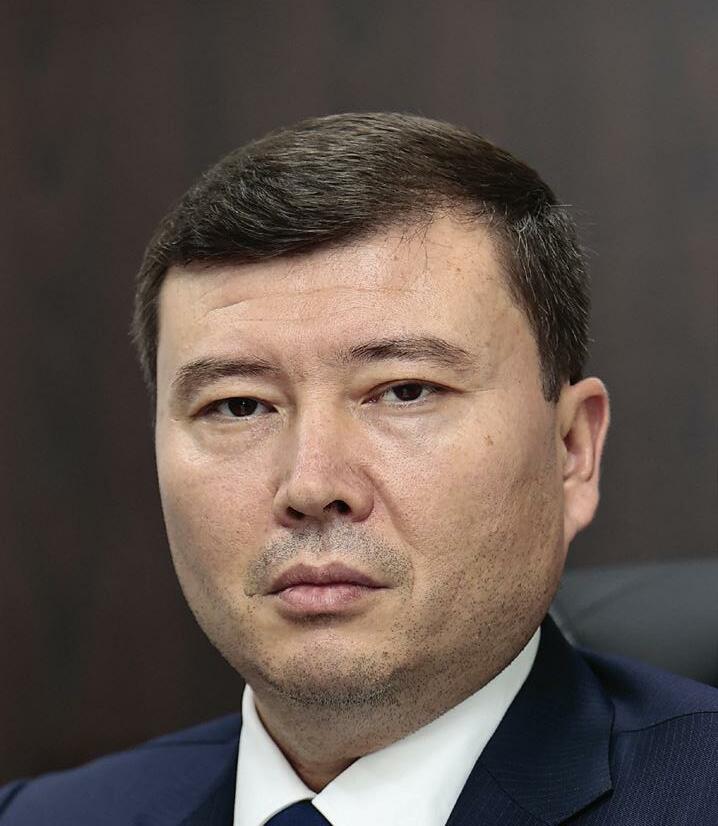
exploration and extraction which accounts for about 80% of oil production in the Republic of Uzbekistan.
The total volume of production in 2021 amounted to 498,900 tons of oil and 401 million cubic meters of gas.
In 2021, SEG sold over 285,000 tons of diesel fuel and over 209,000 tons of motor gasoline of various grades on the domestic market.
The company’s production facilities are located in Karshi, Mubarek, and Andijan.
ANASTASIJA KOVACEVIC Junior Editor Trade Finance Global

Can you briefly introduce SEG?
TK: SEG––known as Jizzakh Petroleum until November 2021––was established in 2017 with the aim of expanding production capacities for the deep processing of hydrocarbon raw materials and the production of high-quality petroleum products in Uzbekistan.
We are Uzbekistan’s largest private oil and gas company and own the subsoil rights to 103 deposits for geological
What is the Digital Uzbekistan 2030 strategy and how does this government initiative help organisations in the country adopt digital tools?
TK: Digitisation of the economy is still in its early stages in Uzbekistan, but the country is moving quickly to make up for lost time. The Digital Uzbekistan strategy is an enabling framework to achieve this.
44 TRADE FINANCE TALKS tradefinanceglobal.com
Uzbekistan’s digital literacy is comparatively low, among both the general population––many of whom still lack personal computers––and corporate and public sectors that do not sufficiently use the potential of digital solutions.
The Digital Uzbekistan strategy sets the driver for the growth of computerisation and digitalisation indicators.
The government is funding courses to improve the computer literacy of the population, with people being taught to work with digital tools.
This increases the number of people who are interested in digital technologies, ideally generating future information technology (IT) specialists for the nation.
In addition, the government has created an IT park with the intent of fostering collaboration and producing benefits between firms and IT providers.
In the meantime, however, while the nation’s domestic skill base grows, Uzbekistan is providing high levels of support to visiting IT specialists through the strategy.
In due time, we will not need to invite IT specialists from other countries since we will have homegrown IT professionals that can meet the country’s digital needs.
In terms of the corporate and public sectors, the state is using IT to try and simplify communication between institutions and governmental bodies––following the lead of the Russian Federation with its approach to digital government.
The government understands the importance of centralising data, for example on the state of the industrial sector, and is turning towards IT solutions to achieve this.
The Digital Uzbekistan strategy seems poised to help businesses harness a greater return from the IT industry in the long term.
What specific strategies and tactics does SEG use when it comes to increasing efficiency through the use of digital tools?
TK: As a company, we are more interested in global solutions that allow us not just to close gaps, but to deal with issues along entire vertical and horizontal lines.
This means that a solution applicable to one asset must also be scalable to other assets.
At the same time, we always have our eye out for IT ‘quick wins’.
If we see that a certain digital solution with a small investment will produce an impact tomorrow, we will implement it. If it proves to be effective with one asset we will then explore the possibility of implementing it on others.
We have decided to go to the SAP ecosystem (a business technology platform), meaning that all large enterprises will manage resources in the SAP environment.
We understand that the new large businesses of the company will also use SAP solutions, which will allow for greater integration across departments and ultimately increased efficiency.
How did the events in Ukraine and the subsequent European energy crisis affect SEG production and distribution?
TK: Our experiences have been the same as many others.
Access to the import of resources has become more difficult due to the redirection of certain flows that have developed over the years, however, deliveries of our products continue both domestically and internationally.
We do not see a critical situation or any special impact on our company from geopolitical decisions.
ESG is a very popular topic right now and most of the discussions have been about moving away from non-renewable energy sources such as oil and gas. How did this affect the operation of SEGs?
TK: Fortunately, SEG has always been focused on a best practice approach to the environment and how to interact optimally, and safely, with society.
This means that the current push toward Environmental, Social, and Corporate Governance (ESG) initiatives overlaps with SEG’s management philosophy.
We are monitoring the various international ESG standards, and the momentum towards a global, centralised standard.
Together with this, we are also making progress towards the international class management information systems and ESG reporting mechanisms that will best convey all the work we do and match our ESG ambitions.
45 tradefinanceglobal.com
EMERGING MARKETS
How does SEG help support the ESG agenda?
TK: ESG is a core element of how modern business operates - or should operate.
At SEG, we believe ESG is a force for global good, a path to sustainable operations - both environmentally and financially - and an effective tool for risk management.
We will continue to develop our own ESG capabilities and participate publicly in spreading the word about ESG as a core element of modern and responsible businesses.

What do you think will be the biggest changes in the oil and gas industry in the next 5 years?
TK: Uzbekistan is in the midst of a dramatic shift to renewable energy sources, and we anticipate this development to continue.
This will not mean we will stop needing oil and gas.
Our nation (as well as many others) has been and is currently heavily reliant on imported petroleum products.
By radically increasing domestic oil production and using modern environmentally sensible
technologies, we are not just contributing to our nation’s balance of payments, we are also reducing transport costs, cutting back on waste, and extracting maximum value from every barrel while minimising the release of carbon into the environment.
This will become increasingly evident over the next five years.
46 TRADE FINANCE TALKS tradefinanceglobal.com
CARTER HOFFMAN Editorial Assistant Trade Finance Global

In association with
3.6
Emerging markets roundtable: understanding and addressing trade finance challenges for SMEs
This year’s ITFA 48th Annual Trade & Forfaiting conference, held in Porto, covered a few key themes, one of the most notable being the increasing trade finance gap, which impacts small- to medium-sized enterprises (SMEs) in emerging markets the most.

The figures are stark. An unmet trade finance need of $1.7 trillion stands -– that’s the prepandemic level -– and SMEs are rejected for trade finance 40% of the time.
Given the counter-cyclical nature of trade finance, boosting access will be critical for global economic recovery following the slowdown from COVID-19 and more recently, the grappling inflationary effects caused by the Russia-Ukraine crisis.
Back in London, TFG gathered four industry leaders to discuss these issues at length: Jason Barrass, chief commercial officer at ARC Ratings; Sean Edwards, chairman at ITFA; Rudolf Putz, head of the trade facilitation programme at the European Bank for Reconstruction and Development
(EBRD); Vipin Vashishtha, managing director and global head of trade asset sales and syndications at Standard Chartered Bank; and Mark Abrams, global head of trade and receivables finance, TFG.
The challenges of trade finance are multidimensional
When it comes to trade finance challenges, many observers claim that lenders are unwilling to provide capital.
The situation on the ground, however, is not so straightforward.
In many instances, larger banks are doubling down on distribution efforts to help free up capital, whilst multilaterals are increasing their support to help provide guarantees to smaller local and regional banks that tend to directly finance SMEs.
“For most banks, direct lending becomes constrained as you go down the credit curve given the capital implications,” Vashishtha said.
47 tradefinanceglobal.com
Small businesses want financing, but the trade finance industry may need to make systemic changes to get it to them.
EMERGING MARKETS
“But banks and the industry is working towards enhancing supplier financing capabilities and other innovative solutions such as securitisation portfolios with alternative investors to bring in additional liquidity; I think this is one of the critical enablers for us to finance SMEs in a larger way.”
For multilaterals and international financial institutions (IFIs), there has been a growing problem with declining relationships between correspondent and respondent banks in recent years -– where risk appetites are constantly ebbing and flowing due to a variety of factors that are often invisible to businesses seeking funding.
The traditional nature of trade finance
The trade finance industry generally understands that banks alone will be unable to address the global unmet demand.
This is because, with limited capital available, credit departments are naturally incentivised to allocate capital to less “risky” deals to generate safer returns.
At the moment, such trade finance transactions are not able to be sold onto secondary (non-trade) markets, a quirk that sharply contrasts the trade finance asset class with other industries.
Barrass said, “Many other industries have investors – nontrade finance investors – that will come in and buy distressed assets because they have different coupon returns on those assets.
“There is still a hunt for yield among non-trade investors who are willing to look at ‘alternative’ asset classes. The yield in trade has been attractive and interest in the assets class has grown.
“In trade finance, we haven’t embraced the use of securitisation tools to structure assets in a way that provides comfort to asset managers and pension funds.”
“We haven’t used securitisation tools to structure assets in a way that provides comfort through higher coupon rates.”
Trade finance as an asset class remains poorly understood by many institutional investors, who at the same time, are looking for low-risk, uncorrelated short-term assets which give positive yield and finance the real economy. Scaleability is also difficult, given the challenges around replenishing the trade assets.
Edwards said, “My take on it is that we haven’t got a lot better at serving those SMEs. We’ve got better tools for doing it, but we haven’t actually gone to the next step.

“ITFA hope to address this with its ITFA Trade Finance Investment Ecosystem (ITFIE), which launched earlier this year.”
The ITFIE aims to advance the evolution of trade finance as an asset class for alternative investors by developing a standardised framework, creating a legal directory, defining a technological framework for trade finance and bridging the communication gap between institutional investors and trade finance world.
48 TRADE FINANCE TALKS tradefinanceglobal.com
ITFA’s vision for this initiative is to attract investment from asset managers, insurance companies, pension funds, and others who seek a risk-return profile that aligns with the character of trade finance portfolios.
Practical strategies for addressing trade finance challenges
One approach that has proven effective in addressing some of these challenges has been leveraging digital tools to create platforms around instruments like supply chain finance.
As these platforms grow and onboarding methods become more streamlined, they will become more appealing to mainstream investors that may have otherwise avoided deploying capital in this market.
Multilateral organisations, such as the European Bank for Reconstruction and Development’s (EBRD) trade facilitation program (TFP), have also been pivotal in driving the sector’s financing.
Putz said: “We support partner banks in 30 countries of EBRD’s countries to help them develop their trade finance businesses.
“We provide them with technical assistance, training, guarantee facilities and loan facilities for on-lending to importers and exporters.”
Many experts believe that programmes like EBRD’s TFP will continue to generate growing benefits if multilaterals provide more risk cover to underlying transactions through their partner banks.
Driving increasing capital into the market will require banks and other institutions to embrace this degree of partnership to serve client needs best -–moving away from the outdated approach that the bank should be a one-stop shop for all client needs.
Even in instances where a bank cannot finance a client’s transaction fully, they must still put in the effort to facilitate that transaction, whether it means referring the client to another bank that has the capacity or partnering with a development organisation that can absorb some of the risks.
Approaches that have proven ineffective
Implementing regulatory constraints is one approach that has not worked at bringing liquidity into trade finance.
This largely stems from the origin of these regulations -– coming from outside the industry and with little opportunity for those actively involved in the space to enact meaningful changes based on their years of expert experience.
The treatment of off-balance sheet instruments provides an excellent example.
With the phased introduction of Basel III reforms, the European Commission’s amendments to the Capital Requirements Regulation (CRR) have proposed that off-balance sheet instruments -– such as guarantees or standby letters of credit -– be categorised as medium-risk.
This means that the required credit conversion factor for these fundamental trade finance products would rise from 20% to 50%, suddenly making them much riskier in the eyes of financial institutions and thus much more expensive for end clients.
While many organisations and practitioners within the industry have been lobbying against these changes, external regulators require vast amounts of data demonstrating a specific trend before they will explore changes to the regulations.
Trade finance does collect data, but data protection issues and a lack of standardisation make it difficult for industry practitioners to use data to convincingly demonstrate a need to adapt the governing regulation.
Transparency: the key challenge
“Transparency––or lack of it––in trade finance is one of the key challenges highlighted by many alternative investors,” Vashishtha said.
The same risk is often priced drastically differently by different institutions with little to no consistency in the processes used.
For an assortment of historical reasons, the trade finance market has not evolved to that level of consistency and standardisation.
“Until we address that, we would struggle to have the required institutional funders coming in due to the discomfort in joining a space that is not transparent,” Vashishtha added.
49 tradefinanceglobal.com
EMERGING MARKETS
Fortunately, would-be investors do not necessarily need to have a clear grasp of the intricacies of trade and trade finance – but they will need more than they have access to now.
“An outside investor is not going to understand trade operational risk, but they’re not interested in understanding that,” Barrass said.
“An alternative investor does not understand the nuances of trade finance, its terminology and certain elements of the risk, such as fraud or documentary, but they do understand the comparable risk if its rated BBB.
“This is where openness and transparency are required to help commercialise trade as an alternative asset class.”
Importing and exporting companies need to be willing to provide banks, credit insurers, or data companies with access to data on their transactions.
With widespread access to data of this nature, the industry will be able to develop a credit risk rating system that outside investors can use to compare unfamiliar trade finance transactions with the deals that they engage with every day.
Education, education, education
The common consensus during the roundtable, however, stood at an industry need to continue providing advocacy and education to corporates and SMEs alike.
On a practical level, SMEs in the market do not care what technology their bank uses to facilitate their requests; they don’t care what platform their bank is a member of; they likely don’t even care which bank puts its name on the documents.
They may care about the simplicity of only needing to use a single platform, but their biggest
concern at the end of the day is that the liquidity is there and that it is at the right cost.
Abrams said: “What we see at TFG is that there are around 20 different structures, from preexport trade loans to receivables, and there is a general such a lack of understanding amongst companies about which desk to go to at their bank.”
Technologists and financiers need to understand that, no matter what solution they hatch up in digital innovation labs, they need to ensure that it does not overcomplicate and thus hinder their commitment to serving the clients that rely on them most.
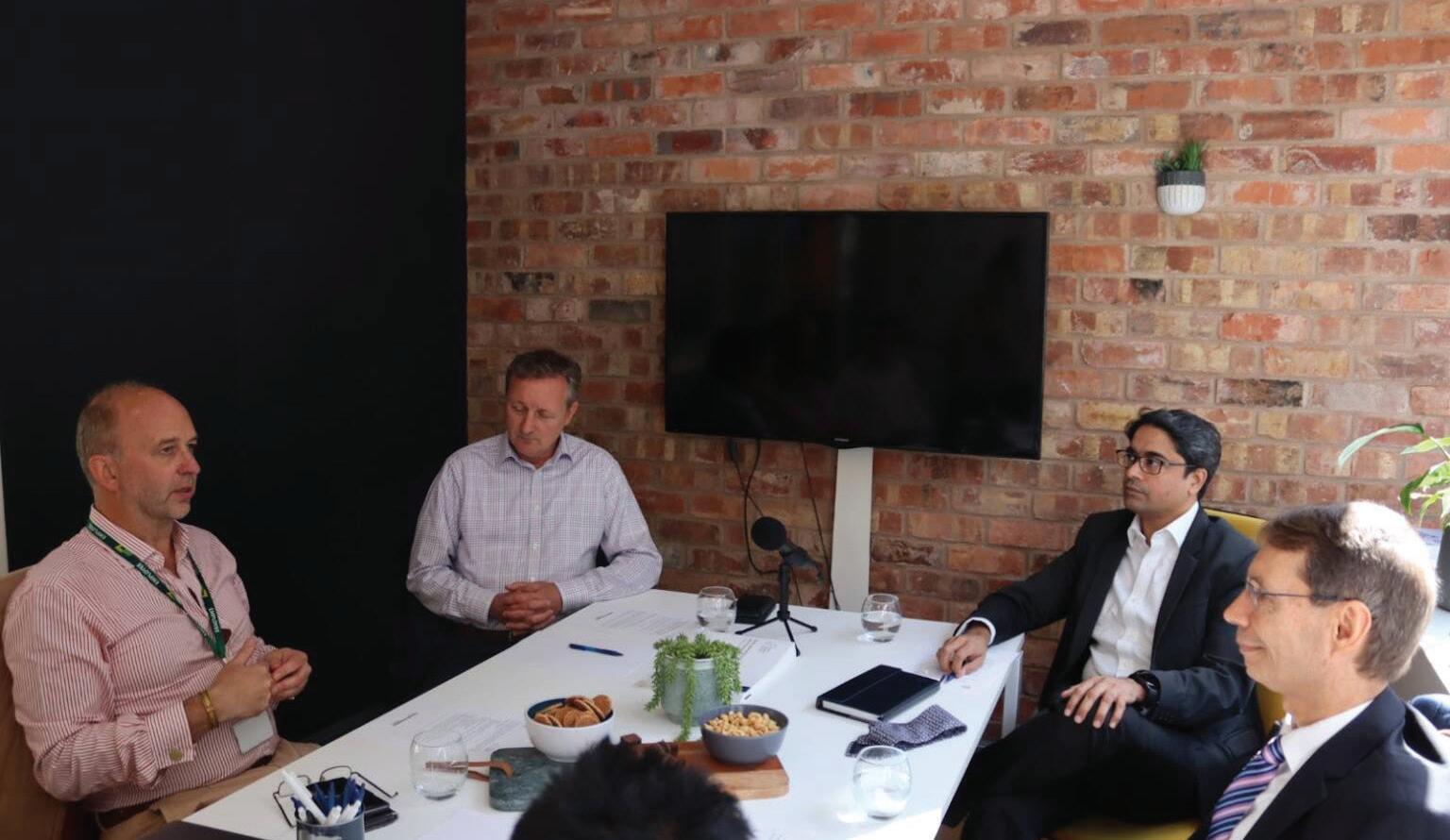
50 TRADE FINANCE TALKS tradefinanceglobal.com
3.7
Correspondent banking in the Caribbean: the impact of ‘derisking’ on the real economy
DALTON LEE Chairman Caribbean Association of Banks
Banks worldwide rely on correspondent banking to access and provide financial services to consumers.
Facilitated by respondent and confirming banks, these global networks can help boost clearing cross-border payment services, remittance, trade finance and transaction banking; such links are central in supporting international trade and promoting financial inclusion.
Recent years, however, have witnessed a steep reduction and cutting of correspondent bank relationships.
Following on from the BAFT Annual Meeting in Washington, Trade Finance Global (TFG) sat down with Dalton Lee, chairman of the Caribbean Association of Banks (CAB), to discuss the status of the correspondent banking world, and what cutting such relationships means to Caribbean economies.
The role correspondent banking plays in the Caribbean economy


The term correspondent banking is used to describe the relationship that exists between two banks.
Typically, the correspondent bank is the larger bank, usually domiciled in one of the money centres of the world: London, New York, Toronto, Tokyo, and increasingly, Shanghai or Singapore.
Correspondent banks facilitate the transference of funds from their respondent bank to the receiving bank.
Lee emphasised that the respondent bank did not necessarily have to be a smaller or third-world-country bank. The only qualifier for this respondent party was its being outside of the larger banks’ domicile.
To get a clearer understanding of how this might play out in a real situation Lee provided an example of the process.
If a buyer wished to purchase an automobile from Japan, they would send a figure of money from their local bank to the recipient’s bank in Japan. This would be achieved through the SWIFT system––an international system for the transference of funds.
51 tradefinanceglobal.com
Correspondent banking decline in the region leaves some Carribean citizens without access to healthcare.
EMERGING MARKETS
The local buyer’s bank would send instructions to the correspondent bank, in this instance, perhaps one in London, which would then forward the aforementioned instructions to the bank in Japan. Finally, the funds would reach the seller in Japan.
Without such a middleman, smaller or less developed countries would find it difficult.
Thus, correspondent banks create networking, enabling the easy, effective, and safe movement of money across the globe, critical to any economic stability.
Despite the important role that correspondent banking relationships play in the ecosystem of trade, these recent years have seen a steady decline in banking relationships.
Derisking dilemmas
This phenomenon of ‘derisking’ has spread far and wide, coming to affect the banking ecosystem in the Caribbean. Why? Simply put, high risk, low reward.
With America being the number one trade partner for most for Caribbean banks, all eyes have turned to gauge the possibility of being rebanked.
Dalton Lee added, “It is about the profitability of the relationship between the correspondent bank and the respondent bank.
“And so if it’s about profit, then we will never be able to be onboarded by any of those large banks in the United States.”
The higher the risk, the higher the price: the effect on the Caribbean economy
This poses huge problems for Caribbean economies and by extension, the Caribbean people, face higher costs when engaging in international transactions.
The fees that banks are required to pay to the correspondent bank with whom they do business have increased exponentially over the five or six years.
Those who choose to do business with CAB, price the service based on the risk profile of the bank.
Business analysis and pricing will always be based on the risk profile, ergo the higher the risk, the higher the price.
This has other peripheral repercussions. Looking specifically at the United States, banks that cannot establish a correspondent banking relationship with the US are rerouted through to other countries.
Depending on the geographical location of such countries, this could mean significant time differences, thereby delaying the funds from reaching the end recipient.
The slowing down of trade has far-reaching consequences.
Pharmacists, for example, that receive their stock from suppliers in the United States will seek to wire money from a domestic bank to an American bank to pay for this service.
However, if the process of transferring money takes 3 days, further factoring in the fulfilment of the order, shipping, and payment of shippers, there is a significant lag in the economy.
Though nothing grinds to a halt, there is an underlying issue by which domestic citizens then have their medical access squeezed by lengthy procedures.
This is but one example, with others spanning familial support systems such as college or school fees. And though the delay may seem minute for some, the doubt that is created (within a field that is fundamentally based on trust) negatively impacts customer relationships.
Other opportunities
Though it may seem a difficult road to establish good correspondent banking relationships with American banks, it is at least heartening to know that there are other options.
Other markets, such as those in Pakistan or Turkey look favourable.
Lee said, “CAB has just begun very preliminary discussions with an African development bank.
“This bank now acts as the central clearing bank for all, if not most, of the transfers out of Africa. And they’re not coming through the United States.”
52 TRADE FINANCE TALKS tradefinanceglobal.com
This relationship could be a significant opportunity for CAB, as there could be scope to learn from the model that Afreximbank has developed and implemented. It is possible that this model can be a suitable solution for CAB.

Many avenues have been explored, in the meantime, with some exploring options with
banks in Russia. Given the current trade finance landscape amid the Russia-Ukraine conflict, such pursuits have yielded no success.
It seems, therefore, that solutions are few and far between. This is not to say that CAB has not found a silver lining; their recent partnership with BAFT will help to facilitate meetings with smaller
and regional banks in the US, widening the trade pool.
Longer-term solutions will take on a more legislative slant, through ensuring all members are in good standing with banks on a global level.
53 tradefinanceglobal.com
EMERGING MARKETS

TRADE CREDIT INSURANCE

4
CARTER HOFFMAN Editorial Assistant Trade Finance Global

In association with
4.1
The changing risk landscape of trade credit insurance
In a world where roughly 15% of trade is protected by insurance, eyes are often on the trade credit insurance stage.
The credit political risk insurance (CPRI) industry helps lenders and corporates with lending capacity and regulatory capital risk. Credit insurance underpins global trade and finance, managing both concentration risk and country limits.
Amid today’s global uncertainty, managing commercial and geopolitical risk in trade transactions has been paramount.
To discuss these challenges and the broader risk insurance landscape, Trade Finance Global’s (TFG) Deepesh Patel sat down with Gary Lowe, global head of the Global Credit Insurance Group at Standard Chartered, Jérôme Pezé, CEO at Tinubu, Janusz Władyczak, CEO at KUKE, the Polish export credit agency (ECA), and Richard Wulff, executive director at ICISA.
Changing risk landscapes
The macroeconomic and geopolitical turmoil in the world is having a large impact on risk landscapes in the trade credit insurance space.
According to Janusz Władyczak, this makes the risk-mitigating services of trade credit insurers and ECAs all the more important, especially for medium- and longterm trade and project finance transactions.
This is because the traditional risk environment is changing.
“There are many countries that we have viewed as quite safe throughout history, but nowadays we cannot be sure if they’re still in the same situation,” Władyczak said.
“This is something which is a huge issue for developing countries especially.”
Rising interest rates and soaring inflation have been troublesome for developed markets, but the situation is much worse for developing nations.
This is because currencies in developed markets, such as the US, are generally viewed as a safe haven during periods of uncertainty, leading many investors and speculators to trade more perceptibly volatile currencies, which are often from developing countries, in for them.
As a result of this, the so-called hard currencies are appreciating in value against developing currencies.
56 TRADE FINANCE TALKS tradefinanceglobal.com
Partnerships are vital for keeping credit lines open amid a rising storm of macroeconomic risk
This means that, even with all else being equal, underwriters need to consider projects in developing regions as bearing more risk than they otherwise would have.
Partnerships are increasingly important
This changing risk landscape is prompting many organisations in the space to look towards partnerships and collaborations as a means of serving the market.
Gary Lowe said, “Bringing insurers on a journey with us as the bank, who has the origination relationship with the underlying customer, is incredibly important.
“You can’t be short an insurance contract or long an insurance contract and short the underlying - these terms simply don’t have any meaning in our market like they do in many others.
“This is about partnerships, risk sharing, and a long-term journey.”
This sense of collaboration is not limited to private businesses, many multilateral organisations and export credit agencies are also leaning into partnerships to better serve clients.
“There is definitely a trend among ECAs and all market players towards an increased willingness to cooperate to mitigate risk,” Władyczak added.
“Everyone wants to share the risk and that’s what is really happening.”
To examine why partnerships and risk-sharing arrangements are widely beneficial, it pays to look at a recent example from Standard Chartered.
The bank recently closed a billion-dollar transaction with a government entity that was looking to undertake an infrastructure water development project.
Despite the immense public good that this project would bring, it was CCC rated, meaning that it would be far too risky for any institution on its own, given the large price tag.
The facility was structured using multiple tranches:
• The World Bank agreed to bear first-loss exposure,
• An African development agency took a second loss,
• Standard Chartered, as the commercial bank, then used the private market for a third loss tranche.
Given this ability to come together and share risks, a collaborative financial market was able to bring this facility to life.
Due to the nature of the project, in the long term, this has the potential to deliver clean water to countless thousands of underprivileged members of the global community.
As Gary Lowe said, “It’s that longterm partnership that has been incredibly important in enabling the market to broaden its horizons and spread its wings.”
Rising insolvencies as a delayed response
The macroeconomic events are also having a hand in shaping the way that insolvencies are playing out across the market.
During the COVID-19 pandemic, there was a sharp decline in the number of insolvencies, largely due to the massive flow of money entering the economy in the form of government support.
Bankruptcies in Europe, for example, fell from an average of 350,000 per year to less than 200,000.
This drop, however, does not represent a shift in the actual underlying veracity of business, but rather a delayed market response as a result of readilyavailable support funding.
“We are going to have to face the fact that there will be a catch-up effect in terms of insolvencies,” Jérôme Pezé said.
According to research from ICISA members, global business insolvencies are expected to rise by around 10% in 2022 and around 14% the following year as more and more countries end their COVID-19 support programs.
This is not just a localised phenomenon but is happening globally.
In many Asian countries, practitioners are beginning to see the value of trade debts outstanding and the number of days required steadily rising, which is going to cause stress throughout the whole supply chain as liquidity tightens.
“It’s like when you dance in a long line,” Richard Wulff said.
“If the start of the line varies a little bit, the end of the line varies a lot, and that’s what we’re bracing ourselves for.”
57 tradefinanceglobal.com
TRADE CREDIT INSURANCE
PAUL WOLLNY Chief Executive Officer GreenStars
4.2
GreenStars’ Paul Wollny on the world of credit insurance
ANASTASIJA KOVACEVIC Junior Editor Trade Finance Global

The world of credit insurance has seen a multitude of fluctuations in the market, as of late. Whether it be, COVID-19, geopolitical instability, or inflation, these factors have significantly impacted the sector, lowering the appetite for risk.
Ahead of ICISA’s Trade Credit Insurance Week, Trade Finance Global’s (TFG) Annie Kovacevic spoke to Paul Wollny (PW), chief executive officer at the Luxembourg-based GreenStars, a highly specialised credit and surety insurer, to learn specifics about the industry.

Wollny said, “It’s an amazing world! Every time I accept a new assignment, I am puzzled by how different a view can be on a simple thing like credit risk. Every stakeholder can add value depending on where they stand in the market.”
Could you tell us more about GreenStars?
PW: In terms of tenors, GreenStars has a well-diversified portfolio from short-term transactions to long-term credits. The variation allows for a large scope, but what matters most is that the tenor fits the purpose of the insured credit.
This being said, sovereign risks do not play a significant role for GreenStars.
GreenStars are highly diversified in terms of both regions covered and the different types of credit and financing offered.
GreenStars focuses on single credit insurance, could you tell us more about what that entails––do you have a use case?
PW: Unlike traditional commercial credit insurance, we do generally cover name by name. Notably, there has been a recent shift to embrace these types of portfolios in order to gain efficiency.
A typical insured transaction could be a bank-to-bank loan which enables the obligor to finance the import of goods. This, in turn, would be used to produce export goods.
But the insured transaction could also be an unsecured loan. In case of a default, the bank will typically try to recover the insured credit before claiming on the unpaid insured part of the loan.
58 TRADE FINANCE TALKS tradefinanceglobal.com
In a world where the perception of risk is often worse than the reality, credit insurance steps up to bring back confidence.
The current market has seen a steep decrease in risk, on a global scale. More and more, we are seeing banks retracting their backing, often disproportionately affecting small- and mediumsized (SME) businesses whose risk does not match their reward.

How has the appetite for commercial and political risk been affected by COVID-19, the Russia-Ukraine conflict, and inflation?
PW: At the beginning of the COVID-19 pandemic, we expected an increase in claims, which, so far has not come to pass.
Nevertheless, we have continued with a selective underwriting approach and benefitted from a very conservative and particular growth strategy for the insured.
GreenStars has been fortunate not to experience any knockon effects as a result of the current Russia-Ukraine conflict. Unfortunately, however, there has been some needed monitoring of the market concerning the effects of the COVID-19 pandemic.
GreenStars considers its managing of a balanced portfolio and close monitoring of selection processes beneficial to our balance sheet and reinsurers.
Therefore, GreenStars has managed to maintain a strong buffer to weather any potential damage to the structure.
Leading on from this…we have seen a lot of banks retreating up the credit curve. Focus has shifted to providing insurance solely for ‘AAA’ businesses, disregarding ‘B-’businesses. What can be done?
PW: The market has seen a trend whereby traditional commercial trade credit insurers have maintained a certain reflex to the situation, however, this method is not mirrored by GreenStars.
As I said in the beginning, there are a broad variety of approaches to credit risk.
GreenStars started with insuring against the default of bank loans for obligors with a very low or no rating at all. Here, the key success factor was the quality of the
structure and, more aptly, the experience of the insured party to manage complex sophisticated systems.
We have excellent experience in supporting new bank activities at the earliest stage possible. Here, it is very important to select the right partner and ensure the underwriting team’s robust understanding of new developments.
Often, the perception of risk is worse than the reality. To give you an example, like many others, we were sceptical about insuring revolving credit (RC) lines. However, the reward in this instance outweighed the risk.
Despite this current phenomenon, it was not always like this. During the COVID-19 crisis, we saw the opposite. In our portfolio, RC lines were used on a very low level.
During the peak of the crisis, the RC use increased by 50%––still far below 50% of the maximum committed amount, thus allowing for a significant margin of safety. Today, however, utilisation is back to normal.
59 tradefinanceglobal.com
TRADE CREDIT INSURANCE
The explanation is quite simple: if the insured party concentrates on the strongest market participants, there is a good chance that they will survive a crisis, especially if they are an essential part of the local industry. A committed RC line will make these market participants even stronger.
For GreenStars, the COVID-19 crisis turned out to be an opportunity rather than a concern. Even in a worst-case scenario, the additional premium would have created enough buffer for absorbing the default of one obligor even if fully drawn.
Having said that, we also note that it can be attractive to strive for risks with a better rating on which we expect to see increased premiums.
Given the stark changes in the market, how have customer relationships evolved?
PW: It is part of our DNA to support innovation. As credit insurers, we should be conscious that those insured are closer to the risk, and therefore have a better understanding of all nuanced elements.
In order to accommodate clients and minimise the risk of ‘antiselection’ insurers can protect themselves by being prepared to constantly learn, ensuring that they have robust processes in place. In turn, this will solidify winwin outcomes.

In addition, the better you know the insured company, the better you can benefit from the expertise of the insured––provided there is a sufficient level of transparency. In this respect, we have noticed that banks especially have developed a better understanding of this need, becoming more open over the years.
How have internal structures of credit insurance companies changed to suit the modified needs of the customer?
PW: We have strengthened our underwriting team which is dealing with a large range of products.
Despite this bolstering, it is still an expectation for insured parties to be better versed in associated risks.
Keeping this in mind moving forward will substantially help all customer relationships.
How do you see the capacity of risk evolving (or perhaps devolving) and where do you see this taking the market?
PW: Well, credit and bond insurance is a niche activity for most insurers and reinsurers. So, capacity depends upon external developments––that is, outside of this insurance class. By nature, this creates some uncertainty.
During the last few years, the industry has shown excellent results and robust resilience against adverse economic challenges. This has been proven in past events; the market expected dramatic loss ratio increases throughout the COVID-19 crisis, but nevertheless prevailed.
Let’s continue on this path!
60 TRADE FINANCE TALKS tradefinanceglobal.com
ANASTASIJA KOVACEVIC Junior Editor Trade Finance Global

4.3
Atradius on political risk, emerging markets, digitalisation
The future of trade credit insurance is a bright one despite the market risks and reduced appetites.
World politics, COVID-19, and hiking inflation rates have all had a part to play in the trade credit insurance sector.
Whether it has been the deterioration of geopolitical stability and subsequent increase in political risk, or the disruption of the supply chain, contributing to a rise in commercial risk, masse uncertainty has rippled through the industry.
To understand what all these interconnected facets really mean for the market, TFG’s Annie Kovacevic sat down with Gordon Cessford (GC), president of Atradius US and regional head of Atradius in North America.

Could you tell us more about Atradius and what market it primarily deals in?
GC: Atradius operates in the private market sector and is the credit insurance arm of Grupo Catalana Occidente.
It provides trade credit insurance in addition to surety and collection services worldwide, with a presence in more than 50 countries around the globe.
Within the US, we cater to all segments of the market, including small- and mediumsized enterprises (SMEs) up to and including multinational and bank businesses with trade credit insurance, structured credit coverage, and a specialised collection offering.
How do private businesses differ from public?
GC: I believe the most important aspect is the underwriting/risk approach to the transaction.
For shorter tenors and private risk, we focus primarily on credit profiles by analysing financial statements with additional scrutiny on the trade sector, trading experience between parties, and business track records.
Shifting to the public sector/ longer tenors, I would consider the underwriting process more complex as we are entertaining risk beyond simple nonpayment, i.e. credit facility, contract cancellation, and nonperformance, which require additional scrutiny on country risk.
61 tradefinanceglobal.com
GORDON CESSFORD
President of Atradius US and Regional Head of Atradius in North America Atradius
TRADE CREDIT INSURANCE
Here, there is more focus on aspects such as the strategic nature of the project, the rule of law, risk for arbitrary action, and the prospect’s experience in the market.
There would also be a review of the underlying contractual agreement as opposed to the short-term revolving transactions. With public buyer/long term, there is often a third country or party risk to consider, including, but not limited to: subcontractors creating potential supply chain issues, sanctions, and geopolitical tensions.
How has the appetite for commercial and political risk been affected by COVID-19, the Russia-Ukraine conflict, and inflation?
GC: From a commercial perspective, there are several factors that have made an impact.
Ongoing global economic uncertainties, supply chain issues, inflationary pressures, the Russia-Ukraine conflict, and the aftereffects of the pandemic have meant a higher-than-usual level of interest in trade credit insurance. As a result, companies
have been looking to mitigate their credit risks.
Our risk appetite remains broadly supportive, but we continue to monitor the conflict’s direct impacts. In capital-intensive, highly leveraged sectors, we have seen a more hawkish stance from many central banks in a bid to contain inflationary pressure.
Despite this risk aversion, tentative steps have been taken into emerging markets. Can you elaborate on why that is and what to expect?
GC: As global supply chains have evolved towards emerging markets, the credit insurance market has followed at the request of our clients.
Emerging markets are riskier as there is a scarcity of historical trends to reference, but the opportunities and the investments make for more significant trades and additional potential to do business for customers and for us.
As we have an eye on all markets at all times, we can make educated decisions about where to invest more heavily to support our customers with local
underwriters––these areas are usually in or around emerging market countries.
Is this in line with changes you’ve seen in the approach to ‘country risk’?
GC: Country risk is not just based on economic factors but also on political risk.
A country can be economically stable and solid, but if the political landscape makes for difficult trades or additional hurdles to get invoices collected, it becomes higher on the risk scale for credit insurance countries.
Looking at the recent examples in Eastern Europe, we have had to take a number of swift actions to enable our customers to continue to do business in a suddenly volatile environment––all the while minimising risks for the client and credit insurance companies.
Country risk is a constantly moving playing field. Geopolitical events are an ever-present factor in risk assessments carried out by clients, banks, and underwriters. Our team at Atradius keeps a close eye on risks in a variety of industries and countries.
62 TRADE FINANCE TALKS tradefinanceglobal.com
There are so many new developments within the credit insurance sphere, how have relationships with customers altered in response to this? Have priorities changed?
GC: Priorities have not changed, we put our Clients ‘front and centre’ in terms of priorities and that will never change.
Trade credit insurance’s core product has not changed in over 100 years. There is obviously more sophistication in underwriting and delivery, and we do see a move towards digitalised solutions and delivery to our clients.
Has this led to internal restructuring to accommodate new customer/market needs?
GC: As an organisation, we are dynamic and fluid––we are always ready to pivot to meet our clients’ needs.
We put focus on developing new ways of conducting business. Our people are the core of what we do, and we don’t want to disrupt that when it is not necessary. Instead, we look at ways to grow by developing new products or processes to better respond to unique needs and serve these new markets.
In response to these shifts, how has digitisation helped to create safer platforms and/or mitigate risk with deals?
GC: Digitalisation greatly shortens the amount of time it takes to receive, process, and return decisions to our customers.
Along with artificial intelligence (AI) and fintech platforms, we will soon be able to offer almost instantaneous protection to our customers with a high degree of confidence.
Especially in a heavily competitive industry where time is of the essence, digitalisation will help provide our customers with a competitive advantage.
While we never want to fully remove the human eye and expertise that our risk underwriters have developed over the years, technology will help us with efficiency and will allow us to tap into more sources for monitoring the credit stability of our policyholders’ buyers.
Further to this, there is such a wealth of data available right now that it would be impossible for a person to digest and analyse on their own fully.
Digital tools will help us monitor all of these signals and will highlight what is worthy of our attention.
Hopefully, this will also allow us to find patterns and better forecast credit trends.
What does the future of trade credit insurance look like? How might it evolve or perhaps even devolve?
GC: That is a very interesting question! I do believe that the future of trade credit insurance is a bright one!
The industry has been around for over a century, and there are no reasons why it can’t be around for another century with the ongoing patterns of domestic business and international trade. Will it still look the same? Fundamentally, yes, although I think there will be a number of digital enhancements.
63 tradefinanceglobal.com
TRADE CREDIT INSURANCE
CARTER HOFFMAN Editorial Assistant Trade Finance Global

In association with
4.4
Resilience, technology, and risk appetite: credit insurance experts weigh in on current trend
Trade credit insurance is leaning on technology to continue providing uninterrupted risk cover to clients -- even with prices on the rise.
Trade credit insurance is leaning on technology to continue providing uninterrupted risk cover to clients -- even with prices on the rise.
The media often shirks trade credit insurance as an umbrella that doesn’t open when it rains––protecting clients only until a moment before the client actually needs protection.
Many practitioners in the space, however, disagree with this notion.
To understand how firms and instructions operate in the trade credit insurance industry and the role that technology may play in altering this landscape, Trade Finance Global’s (TFG) Deepesh Patel sat down with Gary Lowe, global head of the Global Credit Insurance Group at Standard Chartered, Jérôme Pezé, CEO at Tinubu, Janusz Władyczak, CEO at KUKE, the Polish export credit agency (ECA), and Richard Wulff, executive director at ICISA.
Banks and trade credit insurance
Banks use trade credit insurance for five primary reasons:
• To increase lending capacity
• Provide regulatory capital
• Concentration risk management in specific industries or names
• Increase return on capital
• Country limit relief
This raises the question about the notion that trade credit insurance is an umbrella that does not open.
According to Richard Wulff, this is not accurate.
“The best proof that the [CPRI] product works is that the loss ratio hovers around 50% with $346 billion in transactions facilitated for banks,” Wulff said.
“Of all the claims that we’ve received in the time period between 2007 and 2020, 96.8% of all claims were paid.”
64 TRADE FINANCE TALKS tradefinanceglobal.com
There is still risk appetite, it just comes at a cost
Before diving headlong into risk appetites, there are two important points to consider.
First, despite often being viewed this way, risk appetite is not binary, meaning that it can grow and shrink and exist to different degrees in the market.
Second, is that the “market” is an aggregate measure of many different individual players all of which have different strategies for approaching risk. Just because the risk appetite of the market at large is increasing or decreasing, it does not necessarily mean that any individual firm is following that trend.
Many experts would agree that underwriters are becoming more selective in recent months and moving up the credit curve.
“There continues to be sufficient capacity in the market,” Wulff said.
“Although that capacity comes at a price, and that price is increasing at the moment.”
It is increasing in line with the increase in capital costs and with events in the reinsurance market.
There is sufficient reinsurance capacity expected for 2023, but again, it will come at a price.
“What you’ll see is that there will be competition between lines of business, “Wulff added.
“The credit business will have to compete with property, casualty, marine, and other business lines.”
This increased competition will drive the prices up, but will not outright eliminate risk appetite.
Customers will demand more and technology can help
As technology use becomes more widespread in trade and business settings, customers in the trade credit market are going to demand more from their insurers.
“It’s clear that the customer will expect the credit insurer to be more intelligent,” Pezé said.
“In the coming years, credit insurers are going to face a huge test of their business models.”
Customers will expect a credit insurer to better understand their business, including its specifications, credit sectors, market, and buyers.
They will also expect better integrations to credit insurers, seamless connection to banks, and stronger levels of support.
There will also be a growing demand for transparency in terms of risk, pricing, and other pertinent information for the policyholder.
Credit insurers that are unable to meet these demands will be left behind in the market.
Technology and digital tools can play a major role in helping credit insurers deliver these imminent requirements and meet the challenges that lie ahead.
According to Jérôme Pezé, these promises fall into six different dimensions:
• Portfolio analysis (this includes the understanding of exposure, risk consolidation, good governance, and adequate reporting)
• Business intelligence (the large inflow of support capital has made reading financial statements with traditional methods unreliable. Digital tools can help address these added complexities)
• Cost efficiency (in order to remain competitive)
• Reactivity
• Agility
• Product innovation
As Gary Lowe added, “There are still plenty of opportunities to diversify and support the realworld economy, particularly as technology moves on.”
Resilience in the credit insurance industry
Despite all the shocks and changes, it is difficult to dispute the resilience of the credit insurance industry.
“If you look back at the past economic downturns and the shocks that the economy has sustained, one thing was constant, and that was the will and the ability of the industry to support risk and to support its clients,” Wulff said.
“I expect that firmly to continue into the future.
“All the economic shocks and all the downtrends were slightly different and this one is different again.
“What will not change is the industry’s resilience and capacity.”
65 tradefinanceglobal.com
TRADE CREDIT INSURANCE


FINTECH 5
CARTER HOFFMAN Editorial Assistant Trade Finance Global

5.1
A different type of KYC: lessons from the sub-saharan Africa mobile phone market
One mobile phone producer dominates the market in sub-saharan Africa by adapting to consumer needs.
When considering the world’s best mobile phone markets, your mind likely jumps to cities like Tokyo or Toronto, long before it reaches the likes of Kinshasa or Kampala.
While the average consumer may widely know bustling metropolises across the developed world as hubs for technological use and development, we must not be so quick to discount the importance of developing nations for this sector.
Sub-saharan Africa’s 46 nations are home to a combined 1.17 billion inhabitants, 495 million of whom subscribed to mobile services in 2020, a number that GSMA expects to grow to 615 million by 2025.
To capitalise on this rapidly growing market, exporters and manufacturers need to invest the time to better understand the unique needs of local consumers and then use that understanding to find creative ways to address their needs.
The benefits of understanding consumers, however, is not unique to mobile phones. It can
(and should) be used by any exporter seeking to enter new and unfamiliar markets.
For now, let’s take a look at the mobile phone market in subsaharan Africa, what its primary drivers are, and some of the reasons why one firm in particular has proven successful in the market.
Sub-saharan African mobile needs align with feature-lite offerings
Despite the large market size and growth prospects, smartphone exports to sub-saharan Africa have declined for three consecutive quarters, according to data from the International Data Corporation.
Smartphones, however, are not the whole story for the region’s mobile phone market––more than half of users opt for what are known as ‘feature phones’.
Colloquially referred to as “dumb-phones”, feature phones are lower-cost devices with much more limited functionality than their smart rivals.
68 TRADE FINANCE TALKS tradefinanceglobal.com
They still allow users to text, call, and access apps like Facebook and use Opera’s internet browser, but they generally do not have access to third-party app stores and other options normally associated with iOS or Android devices.
Naturally, this reduction in features reduces the costs to consumers, a considerable selling point given that over 40% of people in sub-saharan Africa live below the poverty line, making it one of the poorest regions in the world.
However, lower cost is not the only demand-driver for feature phone sales.
While the limited functionality of this type of device may evoke nightmares for many modernday Western teenagers, subsaharan mobile users tend to prefer it.
This is because the limited features improves the battery life, allowing users to go weeks without charging, compared to mere days for most smartphones.
This is particularly important for two reasons.
First, many consumers do not have ready access to reliable electricity sources that they can use to charge mobile devices.
Second, the prevalence of mobile banking innovations in sub-saharan Africa—such as m-Pesa in Kenya and MNT Mobile Money in Uganda––has made mobile phones the main source of several critical economic activities; this includes submitting government applications, sending money, and even making payments.
A long battery life becomes much more important when a dead
battery means exclusion from basic economic markets.
Product adaption
While the demand is there, for many of the largest smartphone manufacturers, selling feature phones just does not make economic sense, causing many of the well-known brands to simply not offer them.
It comes as little surprise then that popular brands like Apple, Samsung, and Huawei combine for less than a third of the mobile phone market share in the region.
In their place, lesser-known Infinix, Itel, and Techno––all of which are brands owned by parent company Transsion Holdings––dominate, claiming nearly half of the total market share.
69 tradefinanceglobal.com
FINTECH
While the unique economic conditions have created a niche market for this otherwise littleknown Chinese firm to dominate, it is not strictly by chance.
Transsion has invested a considerable amount of time and effort into tailoring its products for this sometimes overlooked market.
Transsion adapts product offering to suit customer needs
Most mobile-savvy Africans know that in order to avoid network fees and get the best connectivity in low-coverage areas, they need more than one SIM card.

While such dual sim card hardware functionality is beginning to permeate Western mobile phone markets––primarily as a business phone feature––it has been the norm among Transsion’s product lines for some time.
Another area where Transsion has invested heavily is in their camera technology, which has been developed for better exposure on darker skin tones.
Again, this attention to customercentric details in its primary export market has contributed to Transsion’s prominence there.
While the firm may not have the high-end design expertise of more well-known brands like
Samsung or Apple, they have been able to acquire a strong market share by understanding the local customer needs and specifically designing their products with these customers in mind.
In an area where feature phones take preference over smartphones, this is all that is needed.
If you are an exporter, ask yourself how you might be able to better understand the customers in your target market in order to provide them with the best product for their unique needs.
That might just be your key to success as well.
70 TRADE FINANCE TALKS tradefinanceglobal.com
RICHARD RAWLINSON Vice President Partner Sales EMEA Transfermate Global Payments

5.2
Procure to pay in a global economy: how businesses can acknowledge FX in their processes
FX market volatility has been injecting uncertainty into international trade transactions, procure to pay (P2P) transactions may be able to help.
Over the last two years, as a result of COVID-19, trade has endured volatility, global supply chain disruptions, and a surge in prices.
This has created enormous foreign exchange (FX) opportunities but brought with it even greater FX risk.
FX markets have an abundance of liquidity (c. $6.6 trillion traded daily) and as such, supply and demand align very quickly.
Unfortunately, the cost of living crisis and inflationary pressures (10.1% in July 2022, expected to reach 14% in Q4, with Goldman Sachs predicting it could hit 22% in 2023), especially in the energy sector due to the Russia-Ukraine conflict and interest rate rises,
have created a huge downward negative economic multiplier and decreased the value of the pound.
Money markets are pricing in a further 75 basis points (BPS) rate hike from the Federal Open Market Committee (FOMC) for a third consecutive month.
In tandem, there have been developments such as the 3% sterling loss against the euro and a 4.5% loss against the US dollar in August alone.
This consistently negative macroeconomic data creates uncertainty en masse––and if there is one thing global financial markets dislike, it’s uncertainty.
71 tradefinanceglobal.com
FINTECH
International transactions
Digitisation
Despite the overall volatility in the market right now, predictions for the future of the eco-system are looking less troublesome.
Accenture, a technology and outsourcing consultant, sees the total value of cross-border payments growing by 5.6% next year, driven by corporate payments.

While there are attempts to digitalise the global payments network, in many cases, international payments can still take days, even weeks, to arrive.
The messaging can be slow, the fees can be substantial, and there is often uncertainty as to what amount will end up in the recipient’s account.
This apprehension derives from using a payment provider without local accounts and, in
turn, necessitates the use of intermediary banks. The banks take their cut in the international payments journeys from executor to beneficiary.
FX risk
FX transactional risk is dictated by the fluctuation of FX rates. The consequences of such volatility can significantly impact international transactions prior to settlement.
There is currently a multitude of fintech products that can aid in mitigating these risks at several stages in the P2P lifecycle.
Global accounts are considered the most reliable if one is looking to navigate a less risky enterprise within the field of multi-currency payables and receivables exposure. Their relatively simplistic nature allows for comparable security as opposed to other more complex financial instruments since most ‘insurances’ carry a premium.
It is a balancing act for many, if not most, small- and mediumsized enterprises (SMEs) tight on cash flow.
Failing to mitigate FX risk can have a subtle pricing impact leading to margin erosion and the squeezing of profits. This often generates consequences whereby business models are simply no longer viable.
The P2P process
P2p is the process of integrating purchasing and accounts payable systems to create greater efficiencies.
It exists within the management process and involves four key stages:
1. Selecting goods and services
2. Enforcing compliance and order
3. Receiving and reconciliation
4. Invoicing and payment
72 TRADE FINANCE TALKS tradefinanceglobal.com
At each stage, a business should ask the following questions:
Sourcing
1. Where does the business source from? (Multi-currency and multi-country?)
2. How does the business manage the sourcing process? Is it one supplier or many?
3. Does seasonality affect where you source from?
Approval
1. How does the approval process work? (two-factor authentication [2FA], e-mail, a single person etc.)
2. If someone central to the approval process is away, what is the procedure? If there is none, it may lead to late payments or the general eroding of trust in company relationships.
Purchase orders and goods received
1. What credit terms does the business have with its suppliers?
2. Does the business have rebate agreements––how are these processed?
3. Are there any charges associated with the delivery of goods?
4. What rate protections exist on goods that do not comply with company standards?
Invoice matching
1. Have lead times and associated costs of missing a supplier payment been communicated?
2. Where is the information pertaining to the invoice stored? Who has access? It is important to note this for both efficiency and security.
3. If details need amending, how is this process managed?
Payment
1. How are international payments currently facilitated? Is it via a bank or a broker?

2. What is the preferred method of payment––type, currency, timeframe?
3. What procedure is in place for time-sensitive payments?
4. If or when a payment is recalled/lost, what is the procedure for tracking? Has there been a factoring in of the cost and the currency?
5. How many people can you pay out (in multiple currencies) at one time?
6. How are the beneficiaries notified that a payment has been sent?
Reconciliation
1. What is the process of keeping these two sets of records in agreement?
73 tradefinanceglobal.com
FINTECH
Month
USD>GBP Spot FX
March 1.34
April 1.31
May 1.26
June 1.25
July 1.20
August 1.18
6-month average/total 1.256
P2P volatility: figures, risks, and solutions
Spot Monthly
In this example, between March 2022 to August 2022, UK businesses buying products from the US now pay c. $10,000 more for every $100,000 per calendar month (PCM). As of September 5, the pound-to-dollar interbank rate is around 1.15, meaning $100,000 would now cost circa £87,000.
Unless the business has a very high margin product/service, this is the difference between breaking even and profit.
Businesses fortunate enough to be selling dollars (i.e., receiving dollars and converting back
to sterling) are undoubtedly enjoying these sub-1.20 levels.
But, for businesses that fall outside these parameters, there is no one-size-fits-all solution.
Certainly, there are some obvious answers for companies dealing with multiple currencies, namely risk management and knowing the risks of a company’s global business model.
The future of FX
The upcoming months will hopefully see an end to the Russian-Ukraine conflict, a new UK Prime Minister, and with it, probable new economic policies that will impact FX markets.
There will inevitably be more digitisation of the fintech
$100k USD in GBP
£ 74,626.87
£ 76,335.88
£ 79,365.08
£ 80,000.00
£ 83,333.33
£ 84,745.76
£ 79,734.49
ecosystem, with new platforms and products coming to market.
Ultimately, businesses working on a global scale, paying out and receiving in multiple currencies, will need a global payment provider facilitated through local bank accounts.
Knowing the entire P2P process and associated lead times of the stages presents a business with enhanced visibility around the timelines and obligations. What is equally important is choosing the right payment provider with whom a business can partner.

74 TRADE FINANCE TALKS tradefinanceglobal.com
MARTIN GRUNEWALD Chief Business Officer BankservAfrica

5.3
How connected payments impact Africa
Africa is a dynamic and exciting market of opportunities waiting to be unlocked. Innovation, entrepreneurial mindedness, and the willingness to embrace change for the good of all make this continent and its people as unique as its emerging payments story.
Known as a ‘hotbed of innovation’ and still viewed as the next growth frontier, Africa is influenced by its people and their remarkable resilience; their constant out-of-the-box solution-seeking has sparked fresh ideas and new thinking. It’s no wonder the financial landscape has expanded as new entrants in the non-bank space start joining the market. The Catalyst Fund has reported steady growth in fintech funding in the African region, amounting to $23 billion in the last five years alone.
These are being influenced by a largely younger, digital-first consumer who continues to make waves in the current demand-led economy–as we are seeing at BankservAfrica where consumerled innovation in payments is on the rise.
Yet, there are still some who have been left behind, finding themselves locked out of the formal economy.
According to FinMark Trust, 71% of the population in the Southern African Development Community (SADC) were financially included in 2021, registering a mere 5% growth from 2015.
There are many historical reasons for this–from legacy infrastructure to disconnected payment systems.
In addition, some individuals do not possess official documentation to provide or validate their identity, making it difficult to join the formal economy to open a bank account or access other financial services.
The World Bank estimates there are 500 million people in Africa without any form of legal documentation.
Fortunately, governments, policymakers, financial institutions, and other relevant parties have recognised this huge gap and are working to resolve these for future digital economy requirements.
75 tradefinanceglobal.com FINTECH
Digital-first African consumers are creating demand for modern payment systems on the continent - can the banks deliver?
Aligned to these are the widespread innovations in payments, which have become widely recognised as a catalyst for economic development and are bound to introduce huge transformations that will set a new path.
Overcoming payments challenges
How are payments bridging this divide?
Several payment systems across the African continent are undergoing dynamic shifts to modernise.
Major preparations are underway for launching the Tanzania Instant Payment System (TIPS) to enable digital financial services and significantly reduce the cost of mobile money transactions.
The adoption of digital, contactless payments–which gained momentum during the COVID-19 pandemic–has contributed to accelerating this transition.
In the period between 2011-2021, BankservAfrica processed 34 billion transaction volumes in South Africa to the value of R116 trillion. In the fifty-year history of payments, these last ten have observed the steepest transition towards digital.
Guided by these breakthrough innovations and rapid shifts in the marketplace, BankservAfrica is driving the transformation of payments in Africa.
The organisation is evolving towards ‘BankservAfrica 2.0’ ensuring the stability and delivery of payments in its new platform era, while also remaining committed to its role as a
strategic and mission-critical utility for banks and the broader payments community.
This aligns with the South African Reserve Bank’s Vision 2025 for a modernised National Payments System (NPS).
The first step to this involves the design and implementation of platform infrastructure to enable the widespread use of mobile instant payments in South Africa. Digital identity has been singled out as another enabler.
Positioned as a multi-industryendorsed initiative, it is hoped that this scheme will inspire further economic growth, job opportunities and financial development.
The delivery of modernised payments extends into Africa where cutting-edge, cross-border infrastructure is being mobilised
76 TRADE FINANCE TALKS tradefinanceglobal.com
to enable instant, inclusive, and interoperable payments thereby driving the region’s trade and financial inclusion goals.
Perhaps the most significant difference in Africa is in ensuring payments are inclusive and accessible for all citizens, regardless of their positions as low- or high-income individuals.
Innovations must address the persisting challenge of financial exclusion while connecting to consumers and their rapidly changing needs. Despite the varying socio-economic landscape, there is a single focus for payments to be seamless, accessible, and affordable for all.
Transforming the payments narrative
Strategic partnerships have been emerging between banks and non-banks to make financial
services more accessible and affordable for the unbanked.
The financial service incumbents are leveraging fintech’s mobile financial services to connect with hard-to-reach audiences and minimise the reliance on cash.
As digital economies spread and the high adoption of smartphones continues, there’s no stopping the mutual successes.
But, what if there is an opportunity to take this partnership to the next level? One where the different channels speak the same language to offer services–from money transfer to other transactional services–in a fully interoperable way, making it easier for consumers to benefit from end-to-end services and not have to face high remittance costs.
According to FinMark Trust, remittance prices have reduced somewhat in the SADC countries, however, more needs to be done to meet the United Nation’s 2030 Sustainable Development Goal to reduce the transaction cost of migrant remittances to less than 3% and to eliminate remittance corridors with costs higher than 5%.
In conclusion, the power of collaboration has become critical to levelling up offerings in the payments world.
What if this could unlock even greater value, open further opportunities and achieve largescale innovation that transforms lives and boosts regional trade while staying true to African values? If that’s what the future holds, there should be excitement for what will emerge in the next few years.
77 tradefinanceglobal.com FINTECH
Head
Product,
JOSH KROEKER Chief Product Officer

5.4
Interview: Why ‘ecosystem play’ is important for digital trade
Digitally-facilitated trade finance ecosystems where collaboration reigns may be the next frontier for the industry.
Recent times have seen fintechs companies collaborating more frequently. But why is this important for trade digitisation?
Trade Finance Global’s (TFG) Annie Kovacevic sat down with Finastra’s Anastasia Mcalpine (AM) and Contour’s Josh Kroeker (JK) to find out more.

What is Finastra’s Fusion Trade Innovation platform and how does it work with banks’ systems and internal workflows?
AM: Finastra’s single digital working capital finance platform supports the front-to-back automation and management of both documentary trade (for example, letter of credits (LC) collections and guarantees) and supply chain finance products.
Fusion Trade Innovation is our best-in-class, multi-awardwinning WCF booking engine; when combined with Fusion Corporate Channels we provide a front-to-back, end-to-end trade, and working capital finance solution. It can be deployed on-premise, or on the cloud with integration to an ecosystem of services that supports the digitalisation of the full transaction lifecycle.
The applications have open application programming interfaces (APIs) that connect via FusionFabric.cloud to the wide ecosystem of networks, fintechs, and third-party solutions. This redefines the WCF landscape and opens new business opportunities for banks and financiers.
How does Contour’s network digitalise the LC and how do banks benefit?
JK: Contour and its founding banks believe that the cornerstone of digitisation is connectivity, and today there is a lack of common connectivity between banks, corporates, and the physical supply chain that make up the trade finance ecosystem.
Contour aims to change that by providing connectivity to the participants of a LC transaction, either as direct network members, as in the case of banks and corporates, or through partnerships and interoperability with physical supply chain network solutions.

78 TRADE FINANCE TALKS tradefinanceglobal.com
Contour
ANASTASIA MCALPINE
of
Trade and Supply Chain Finance Finastra
ANASTASIJA
KOVACEVIC Junior Editor Trade Finance Global
This type of connectivity historically has required a centralised database with all the world’s data in one place. Still, with Contour’s decentralised technology, we have removed this hurdle to adoption in a profound new way.
From this foundation of common connection and decentralised data, banks will finally be able to shift away from unsecured communication and paper documents towards a more streamlined, automated, and digital trade offering.
This is important for banks to lower the cost to serve for trade finance products and, just as importantly, to improve the user experience of accessing trade finance products.
These two changes combined can drive an increase in the size of their trade finance businesses and the accessibility of trade finance to a wider range of corporates.
Can you provide an overview of the Contour and Finastra tradetech partnership, what was the initial rationale?
JK: Partnerships have always been a major part of Contour’s plan to increase the digitisation of trade finance, therefore this industry collaboration will be key
to our mutual success in that goal.
We know that banks have invested a significant amount of time and money in their trade finance software relationships, and it only makes sense that they should be able to access the Contour network and its many benefits using the software user interface of their choice.
For many banks, that choice is Finastra, and we are very pleased to see Finastra taking such proactive steps to connect their clients to the Contour network.

Why is Finastra partnering with other fintechs, and why is this ‘ecosystem play’ important for transaction banking?
AM: A typical trade transaction involves many data touch points across various often international parties; these may include buyers, sellers, financiers, insurance, freighters, port authorities, customs and many more.
With so many varying denominations, friction can occur in the process, in addition to; lack of visibility, delays, and uncertainty among transaction parties.
Digital technologies hold immense transformative
potential for global trade. The finance industry remains largely paper-based, and technology can help financial institutions (FIs) to reduce costs, improve operational efficiency, and reduce risks.
Finastra’s goal is to deliver a solution that digitalises the trade transaction end-to-end. This will be achieved through pre-integrated digitalisation capabilities offered through an ecosystem of fintechs and marketplaces.
Clients will be provided with completly harmonised, futureproof access to process automation capabilities optimising overall time and cost to serve. Through a network of selected partners, we offer a range of digital trade capabilities that all improve the efficiency of banks’ trade operations and add value by focusing on business growth. Clients will then be able to innovate at scale at a much lower cost.
Finastra’s integrations with fintech solutions, such as Contour, means that clients can deliver innovation at speed. This is because they have access to a growing ecosystem of valueadded services that don’t impact core, pre-integrated solutions.
79 tradefinanceglobal.com
FINTECH
Why are banks digitising their backend and frontend trade finance systems, and how is this working in reality?
AA: Digitisation is not simply a trend but a disruptive change to the way trade and working capital finance operates.
Many FIs have had difficulties in accessing documentation throughout the pandemic due to lockdown and quarantine protocols. However, coming out of the height of the pandemic, we are seeing an increased push for fully digitised global trade and working capital finance.
JK: Digitising trade finance is a two-pronged problem. One is to ensure all the communication is digital (i.e., remove paper applications at the counter and instead use phone calls to clarify errors), and two is removing paper from the process by working with physical supply chain partners to eliminate the need for paper evidence.
Networks like Contour can enable new digital communication connections, and with partners like Finastra, further banks and corporate customers can be reached. Contour is also a multibank platform, allowing larger corporations to connect with their panel of banks.
Removing paper is a challenge. To achieve this, banks need to
digitise through an ecosystem play while smoothly integrating digital channels to provide a coherent and logical end-user experience.
The end goal remains the samea lower cost-to-serve product set with improved user experience for corporates. This is what can lead to sustainable growth in trade finance and a more inclusive and sustainable trading world as a result.
Ideally, all of this must be delivered to a single market standard, but we have to start somewhere and not risk waiting for a perfect starting point.
Could you give an overview of how a Finastra customer (bank) could extend its existing workflows using Fusion Trade Innovation to use the Contour network?
AM: Our collaboration with Contour enables the automation of transaction initiations, as well as enabling compliance checks and better document examination across trade instruments and transport tracking offered by our other partners.
All of these components work together to enable automated, frictionless transaction processing that reduces time and cost, thereby supporting faster business growth.
Most importantly, it improves customer support and visibility delivered by Contour.
Some of the key benefits that clients can achieve through the Finastra-Contour collaboration are:
• Transform the LC process by having all participants on one platform.
• Increase adoption of digital documentation––streamling workflows by reducing reliance on paper-based documents.
• End-to-end digital LC solution that is cost-effective, fast, and secure––offering full transparency and visibility of the entire transaction

The transformation of customer service and transaction processing have a significant impact on operational costs. In a 2020 International Chamber of Commerce (ICC) survey, banks estimated that digitisation would provide an 11%-to-30% reduction in overall operational costs across the subsequent three years.
How does this work with FusionFabric.cloud?
AM: There may be a preconception that new working capital solutions should be managed ad-hoc by fintechs.
80 TRADE FINANCE TALKS tradefinanceglobal.com
However, the reality is that the complexity of adding new products is incredibly challenging, expensive, and risky in a disjointed multi-system solution.
Although other providers may offer APIs and are exploring platform delivery models, the majority of services would need bespoke integration and ongoing maintenance, which limits the ability to innovate at speed and also limits the choice of solutions.
Our digital trade ecosystem strategy via Finastra’s FusionFabric.cloud is based on harnessing open ecosystems for fast innovation in trade and working capital finance.
The open APIs provide an ecosystem for fintechs, FIs, and other market players with an opportunity to create differentiated offerings through a series of pre-integrated complimentary digital solutions.

For example, the Contour collaboration allows our bank clients and their corporate clients to simplify the LC process on one multi-bank platform, maximising business efficiency and offering new business opportunities.
Finastra clients can also create and manage digital original documents, as well as use intelligent document recognition, data screening, and business
analytics using optical character recognition (OCR) and artificial intelligence (AI)/machine learning (ML).
Is there competition (or coopetition) with Finastra and other back-office providers to work with Contour?
AM: As far as we are aware, this is the first collaboration of its nature on the market. Finastra believes in openness and will continue investing driving innovation which will complement our solutions, ultimately helping our banking clients to improve their business efficiency and success.
JK: Contour is an open network and we are happy to work with other providers, but it is great to have a forward-thinking partner in Finastra that sees the value in being first to this space, and the benefit of offering their clients a more holistic and connected approach.
What’s next for the future of tradetech collaborations and who will drive this change?
AM: The transition to the digital norm requires constant collaboration between tradetech providers.
This way, businesses and banks can improve the efficiency of their trade operations through automation and unlocking customer value.
Collaboration with the Contour team is an example of two complementary solutions being integrated in a seamless way to help clients accelerate their business and realise digitisation ambitions. It eases digital adoption and transformation.
This foundation acts as a catalyst toward the transformation of the trade finance industry, forming a scalable solution that brings the benefits of digitisation to an international trade ecosystem.
Finastra is committed to the vision of digitising global trade that, among the abovementioned, can also deliver ‘trade for good’ in an advanced sustainable way.
This can be achieved through optimising trade transaction processes through innovative technologies that reduce the use of paper, improve access to financing for small- and medium-sized enterprises (SMEs), and achieve many other global environment, social, governance (ESG) benefits.
We look forward to working closely with more like-minded fintechs and extending the Finastra ecosystem.
81 tradefinanceglobal.com
FINTECH
5.5
Driving a digital agenda for trade: how the ICC is setting the standard
MARK BORTON

Managing Director for Australia and New Zealand, and the Head of Business Development for APAC MonetaGo
If you mention the International Chamber of Commerce (ICC) to any practitioner––from a bank or a corporate––involved in trade finance most, if not all, would associate the organisation with issuance of rules.

Certainly, this is true with the ICC having been in the business of ‘issuing rules’ since 1933, when the first version of Uniform Customs and Practice for Documentary Credits (UCP) came out.
This event was monumental, as it introduced order and certainty to those involved in documentary credits and, whilst subsequent versions of the UCP were issued to keep up with developments in the market, it also provided a launching pad for further rules such as the Uniform Rules for Collections (URC) introduced in 1979.
Today, UCP600 and URC522 will adorn your desk.
However, as the market has evolved and the drive for digitisation has increased, so too has the ICC needed to ensure that it keeps up with this trajectory.
This is evidenced with the introduction of the ill-fated Uniform Rules for Bank Payment Obligations (URBPO) in 2013, the latest electronic documentary credits (e-UCP) and the supplement for collections (e-URC) being launched in mid2019. Finally, late 2021 saw the introduction of a completely new set of rules, the Uniform Rules for Digital Trade Transactions (URDTT).
82 TRADE FINANCE TALKS tradefinanceglobal.com
The ICC may be the organisation that ultimately sets the standards but it is not something that they can do alone.
With long-standing, globally recognised rules in place supporting 21st-century instruments like the bank payment obligation (BPO), strong rules covering the e-versions of the main trading instruments of documentary credits and collections, new rules for digital trade transactions, and the ICC digital standards initiative (DSI) well-established, what does the landscape currently look like for digital trade under these?
Whilst there are documentary credits issued today that are subject to eUCP, this does not translate to the transaction itself being digital in nature––far from it––as eUCP supports the presentation of electronic records to form a conforming presentation (for example, PDFs) either in isolation or in conjunction with physical paper records.
So, not a digital trade transaction at all where the transaction is undertaken end-to-end using data as opposed to documents.
In most cases, whilst a documentary credit may be under eUCP, the presentation itself is either fully paper-driven or ‘mixed’.
Some of the documents may start as electronic records but the actual presentation ends up being completed in paper format therefore removing the potential
benefits offered by wholly electronic record presentations.
In short, the adoption of these new modern rules has struggled to gain mass-market adoption.
Solutions to current challenges
To help rectify these hurdles, the ICC Banking Commission has constructed two working groups to help unlock the critical path barriers hindering implementation.
The first is the Commercialization Working Group, led by Merlin Dowse, executive director, global head of Core Trade Innovation and Digital Solutions at JP Morgan, which focuses on understanding some of the obstacles to integration and manners in which to resolve them.
The second working group––led by Samuel Mathew, managing director, global head of documentary and financial institution trade at Standard Chartered Bank––focuses on application programming interface (API) standards to help improve the efficiency of bank technology departments.
This comes in addition to corporate and trade platform players connecting and sharing data with each other to enable trade transactions.
The reasons for this lack of traction in moving away from paper presentations are quite simple and revolve around the following.
Legal structures
Currently, most markets have legislation that has not kept up with digital developments.
Consequently, there is uncertainty surrounding the legal standing of physically unsigned digital documents and whether they hold the same weight as documents with ‘wet ink’ signatures.
When one considers fully digital solutions where data––rather than documents––are being evaluated, then there is a definite mismatch of legislation.

Supply chains not being fully connected
Ideally, every counterparty in an end-to-end supply chain would have the same driver and willingness to move away from inefficient and costly paper.
Unfortunately, this is not always the case, resulting in fully electronic transactions (or even digital) failing after the first hurdle.
83 tradefinanceglobal.com FINTECH
Consequently, the downstream counterpart is not enabled, so the transaction ends up reverting to paper or remaining a paperbased trade entirely.
In reality, change has mostly been driven by various parties trying to improve their own working capital positions separately, meaning that there has been a misalignment of benefit realisation.
Ultimately, connectivity will rely on measurable value being shared throughout these supply chains.
Limited customer demand leads to banks not wanting to be early adopters for aforementioned reasons.
Unless a customer expresses a strong desire or need to get rid of paper, then most banks on balance will choose the ‘reactive’ path.
This is not a criticism but rather an economic reality. Unless there is a strong business case, a risk event, or a large customer threatening to take their business elsewhere, a bank may decide not to use their development and innovation funding in this manner.
Digital islands or a lack of interoperability
This is especially prevalent in the electronic bills of lading (eBLs) space where shipping companies and customers may use different providers of eBL issuance services.
These providers will each have their own rulebook resulting in fragmented practices that can end up disabling rather than enabling.
Last but not least, even when a
solution is technically feasible, the parties in the chain may find that it is not necessarily cheaper, faster, or better than the current status quo. After all, if the digital solution does not improve efficiency in terms of cost and risk, then why change?
However, there is light at the end of the tunnel.
The issue surrounding the legal standing of electronic records is now being tackled in several key geographies through implementation of the United Nations’ (UN’s) Model Law on Electronic Transferable Records (MLETR).
Singapore and Bahrain have already adopted MLETR, with the UK progressing towards the same goal under G7 support. Elsewhere, the US has recently implemented some amendments to their Uniform Commercial Code (UCC) that moves it closer to the MLETR.
A foundational enabler titled ICC Standards Toolkit for CrossBorder Paperless Trade has been issued by the ICC DSI. This comprehensive guide outlines actionable ways the market can move towards greater adoption in a consistent and cost-effective manner.
These facets come together to help move the market towards greater acceptance and adoption of electronic records. The next step: fully data-driven digital trade.
The future of digital documents
Whilst this macro-level approach has value, the Banking Commission’s Commercialization Working Group is crucial to understanding how these rules
will affect operating models.
The group is also integral for comprehending the incentive required for change, leading to the funding allocation needed for these measures to be adopted and maintained sustainably.
This is where the URDTT will come to the fore. These rules are designed for the digital-only trade environment, with a goal of harmonisation towards MLETR.
No paper––now there’s a thought!
Dowse said, “Digital transformation, whether by a corporate or a financial institution is a journey where each one of us travels at a different pace.
“To this effect, the Commercialization Working Group’s…collaboration with the ICC Digital Standards Initiative [has] shifted our focus more on the ‘how’ instead of the ‘why.’”
Mathew said, “Most digital solutions out there underestimate counter-party risks, digital title/ control of cargoes, and the role and ability (read capital) of lenders to take credit risk of importers.Therefore [they] are solving only a part of the puzzle.
“It’s not just about the data, but also the ability to have constructive control of title and take risks based on the digital assets. Very often solutions solve just part of the trade flow and only cater to one (or a few) parties in the chain.”
Mathew added, “Countries
84 TRADE FINANCE TALKS tradefinanceglobal.com
adopting legal frameworks such as MLETR will definitely help, but the industry also needs a resolution for technology standards and interoperability issues.

“Even with a digital title/asset, the onus of proving singularity/ uniqueness rests on the parties contesting it in a court of law.”
Ultimately though, standards and rules will mean nothing unless the entire trade ecosystem works together––this means banks, buyers, sellers, governments, regulators, shipping companies, and more; there has to active participation.
Banks must be prepared to get involved in lobbying for change, as well as spending hard-fought innovation budget.
Supply-chain participants need to look end-to-end and not just stop at the first tier, but consider how the rest of the chain can be strengthened to operate more efficiently.
Governments need to recognise and embrace the need for legal and structural reform for trade which not only improves the way business functions but also mitigates risk in the system and the ICC needs to continue to play the role that its always played – “make business work for everyone, every day, everywhere”.
There’s no more standing on the sidelines!
85 tradefinanceglobal.com
FINTECH

UPCOMING CONFERENCES AND WEBINARS
TFG partners with the world’s leading international trade and finance conferences around the world. For more information, exclusive TFG partner discounts and details on how you can get involved with these conferences, visit tradefinanceglobal.com/conferences.

8
6-9 September 2022
The 48th Annual International Trade And Forfaiting Conference Porto, Portugal
Commodity Markets
12-14 September 2022
Modelling, Analytics & Risk Management London, UK

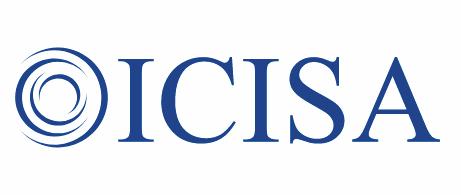

14-15 September 2022 Risk Management in Energy Trading – 2022 Edition Houston TX, USA

17-21 September 2022 55th Annual Meeting Marrakesh, Morocco
19-20 September 2022 WOA 4th Community Convention Mainz, Germany



21-22 September 2022 2022 EBRD TFP Trade Finance Forum Istanbul, Turkey
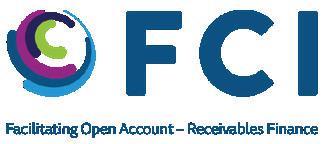
7th Annual Canadian Forum on Global Economic Sanctions Toronto ON, CAN 26-30 September 2022 Trade Credit Insurance Week 2022 Virtual

22-23 September 2022
27-30 September 2022 WTO Public Forum Geneva, Switzerland 28-29 September 2022 Energy Trading Week London London, UK

October 2022 ExCred Americas New York, USA

October 2022 2022 BAFT Global Councils Forum Amsterdam, Netherlands

88 TRADE FINANCE TALKS tradefinanceglobal.com DATE CONFERENCE PROVIDER LOCATION
5
9
10-13 October
Sibos Amsterdam

12-13 October 2022
Netherlands
17-21 October 2022
ACI’s 4th Conference on U.S.China Trade Controls Arlington VA, USA


International Trade & Prosperity Conference

October 2022 WOA Innovation Briefing

23-26 October 2022 Money 20/20 USA

Las Vegas, USA
31 October 20221 November 2022 Hong Kong Fintech Week Hong Kong

2-4 November 2022 2022 International Trade Conference Houston, Texas

2-4 November 2022 Singapore Fintech Festival Singapore

15 November 2022
Africa Johannesburg, South Africa
22-23 November 2022 Commodities Trading Europe 2022 London, UK
November 2022
8th Annual Alternative & Receivables Finance Forum London, UK

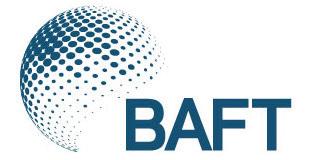
DATE CONFERENCE PROVIDER LOCATION
2022
2022 Amsterdam,
ICC
Virtual 18
Virtual
89 tradefinanceglobal.com UPCOMING CONFERENCES AND WEBINARS
23-24
ExCred

AVAILABLE TO LISTEN ON Search ‘Trade Finance Talks’
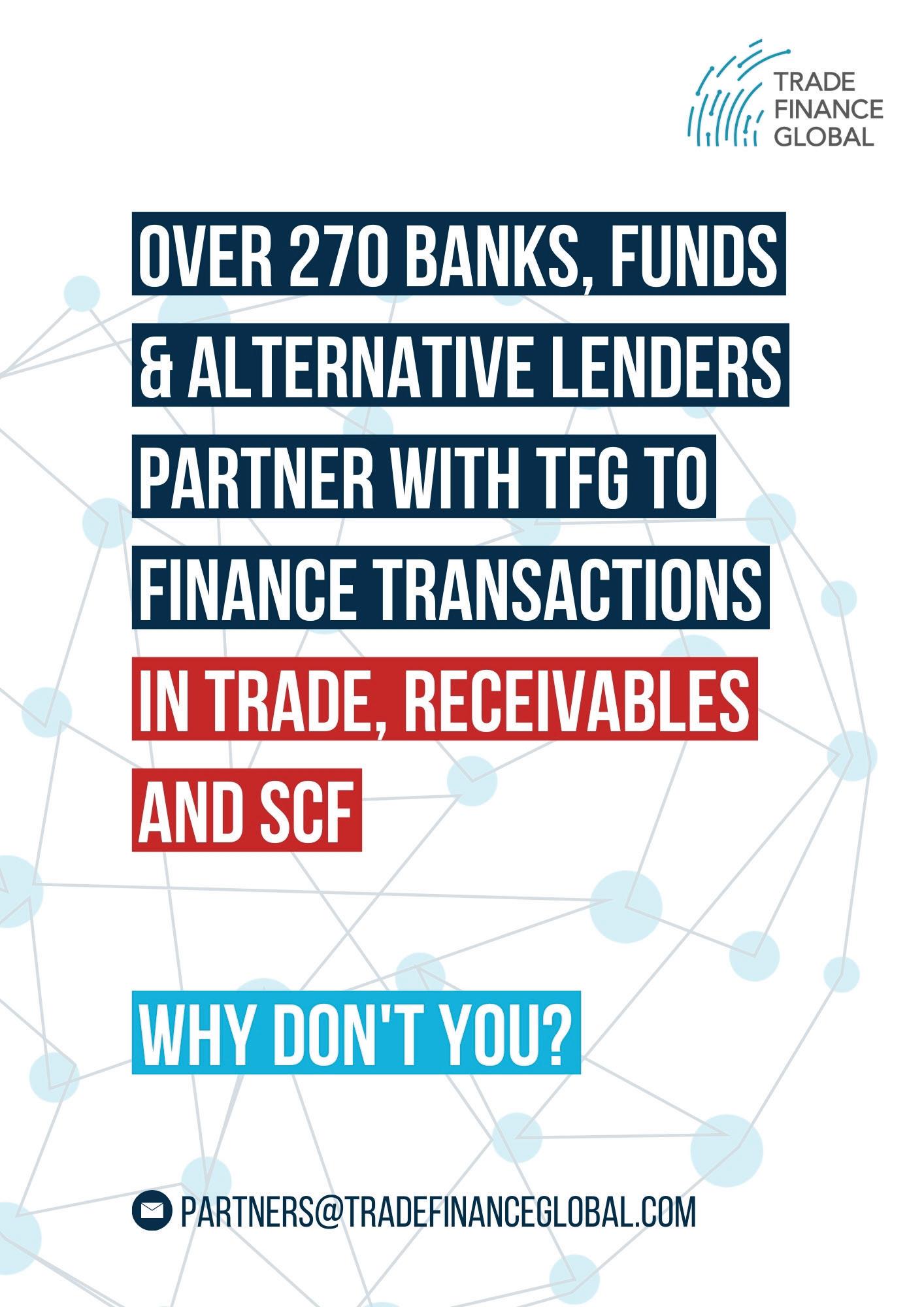
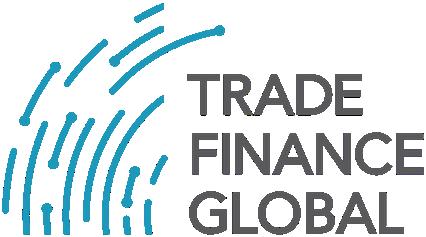
ABOUT TRADE FINANCE GLOBAL
TRADE FINANCE WITHOUT BARRIERS
Trade Finance Global (TFG) is the leading B2B fintech in trade finance. TFG’s data-led origination platform connects companies with innovative trade and receivables finance solutions from over 300 financial institutions.
This is combined with TFG’s award-winning content, informing a global audience of 160k monthly readers (6.2m impressions) – across app, podcasts, videos, magazines and research.

STRATEGIC PARTNERS
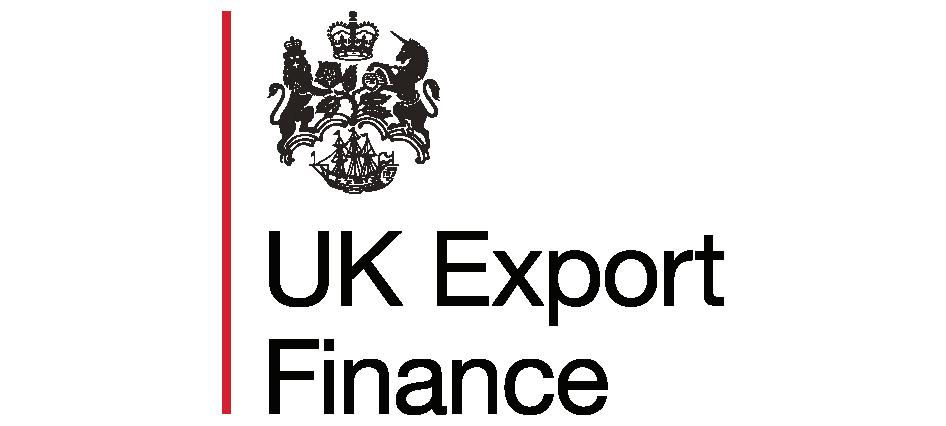



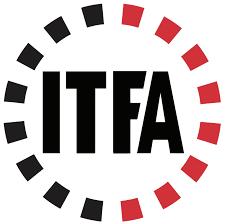



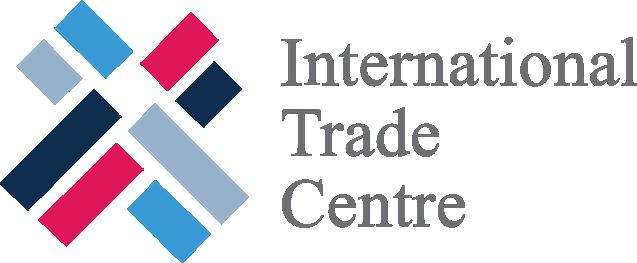

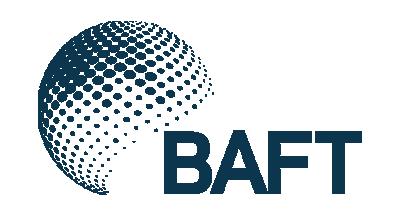

TRADE & RECEIVABLES FINANCE
Trade Finance Global (TFG) is the leading B2B fintech in trade finance.
TFG’s data-led origination platform connects companies with innovative trade and receivables finance solutions from over 300 financial institutions.
We assist specialist companies to scale their trade volumes, by matching them with appropriate financing structures – based on geographies, products, sector and trade cycles. Contact us to find out more.
TRADE INFORMATION & EDUCATION
TFG is a leading provider of educational resources on international trade and trade financeacross app, podcasts, videos, magazines and research.
Attracting around 160k monthly readers, our publications have a global audience in 187 countries.
Our specialist content hubs provide free guides, thought leadership articles and features on International Trade, Letters of Credit, Shipping & Logistics, Risk & Insurance, Treasury & FX, Blockchain & DLT, Legal, Receivables and Export Finance.
TFG are strategic media partners for trade conference providers around the world.
TFG also hosts the International Trade Professionals Programme with LIBF, and funds the Accelerate Scholarship, a grant to help students to pursue a career in trade. Others know us through our Annual International Trade Awards, celebrating outstanding players and contributors in the trade ecosystem.
Through these activities, TFG is democratising trade finance.
94 TRADE FINANCE TALKS tradefinanceglobal.com
CONTACT
MAGAZINE AND ADVERTISING talks@tradefinanceglobal.com
EDITORIAL AND PUBLISHING media@tradefinanceglobal.com
TRADE TEAM trade.team@tradefinanceglobal.com
ENQUIRIES info@tradefinanceglobal.com
TELEPHONE +44 (0) 20 3865 3705 WEBSITE www.tradefinanceglobal.com
OUR LONDON OFFICES
Trade Finance Global 14 Hatton Garden Third Floor London EC1N 8AT
Trade Finance Global 201 Haverstock Hill Second Floor London NW3 4QG
Trade Finance Global 73 New Bond Street London W1S 1RS
95 tradefinanceglobal.com












































































































